- Itinéraires
- Le meilleur du Japon
- Tours et Activités
- Guides de voyage
JRailPass.com » Japan Travel Blog » Voyage en train au Japon : un guide complet

Voyage en train au Japon : un guide complet
31 Juillet, 2023

Si vous prévoyez un voyage avec le Japan Rail Pass, mieux vaut vous préparer ! Vous vous retrouverez souvent dans les trains japonais. Le train est le moyen de transport principal au Japon depuis l’apparition des premières locomotives à vapeur en 1872.
Un total de 30 625 km de voies ferrées parcourent le pays et transportent plus de 9 millions de passagers chaque année. Pour cette raison, 46 des 50 gares les plus fréquentées au monde se trouvent au Japon.
La plupart des lignes ferroviaires japonaises ont un nom unique, généralement tiré des villes ou des régions sur leur itinéraire , il est donc extrêmement facile de se déplacer . Le nom des lignes est même indiqué sur le billet.
Toutefois, comprendre le système de transport japonais reste un défi pour certains. Nous avons donc créé ce guide complet sur les transports au Japon pour vous donner un petit coup de main !
Le système ferroviaire japonais
Le système ferroviaire au Japon est si bien développé, ponctuel, étendu et diversifié que vous pouvez supposer qu’un train peut vous emmener partout où vous avez envie d’aller.
La première chose à savoir est que les lignes de chemin de fer au Japon ne sont pas exploitées par une seule société. Japanese National Railways , une société publique, était autrefois chargée de la gestion de l’ensemble du réseau ferroviaire japonais.
Toutefois, en 1987, la JNR a été privatisée et scindée en 6 sociétés ferroviaires indépendantes :
- Hokkaido Railway Company
- East Japan Railway Company
- Central Japan Railway Company
- West Japan Railway Company
- Shikoku Railway Company
- Kyushu Railway Company
Ensemble, elles forment le Japan Railways Group, ou JR Group. Le groupe JR possède environ 80 % des chemins de fer au Japon. Le reste appartient à des sociétés privées.
Par conséquent, en consultant les cartes au-dessus de tout distributeur de billets au Japon, vous remarquerez que certaines lignes allant dans la même direction ont des prix différents, car chaque société a ses propres tarifs.
Vous êtes libre de choisir la société avec laquelle vous souhaitez voyager. Le billet multi-usage Japan Rail Pass fait partie du groupe JR national. Le JR Pass peut donc être utilisé pour la majorité des services de trains principaux !
Pour plus d’informations sur les lignes nationales, régionales et locales, consultez notre page destinée aux cartes .
Compagnies ferroviaires privées
Il existe des dizaines de compagnies ferroviaires privées au Japon. Certaines d’entre elles n’exploitent qu’une seule ligne, tandis que d’autres gèrent de plus grands réseaux.
Selon la Japan Private Railway Association, voici les principales sociétés de chemins de fer privées qui opèrent actuellement dans le pays :
- Keikyu : relie Tokyo à Yokohama et le sud de la préfecture de Kanagawa
- Keio : exploite un réseau de lignes ferroviaires à l’ouest du centre de Tokyo
- Keisei : gère plusieurs lignes entre Tokyo et la préfecture de Chiba, dont une vers l’ aéroport de Narita
- Odakyu : exploite 3 lignes reliant le centre de Tokyo à l’ouest et la préfecture de Kanagawa
- Seibu : gère un réseau de lignes dans la périphérie à l’ouest de Tokyo
- Tobu : opère des lignes dans la périphérie de Tokyo et les préfectures au nord de la ville
- Tokyu : exploite un réseau de lignes au sud de Tokyo
- Meitetsu : gère un réseau ferroviaire dans les environs de Nagoya , dont un accès à l’aéroport international du Chubu
- Hankyu : exploite des lignes au nord d’ Osaka et relie Osaka à Kobe et Kyoto
- Hanshin : gère une ligne entre Osaka et Kobe , ainsi que quelques lignes secondaires plus courtes
- Keihan : opère une ligne principale reliant Osaka et Kyoto
- Kintetsu : gère le plus grand réseau non JR, reliant Osaka, Kyoto, Nara, Ise et Nagoya
- Nankai : exploite des lignes au sud d’Osaka et dans la préfecture de Wakayama et facilite l’accès à l’ aéroport du Kansai
- Nishitetsu : responsable du réseau ferroviaire de la préfecture de Fukuoka
Ensemble, ces compagnies exploitent environ 2870 km de chemins de fer à travers le Japon. Cependant, notez que le groupe JR contrôle plus de 20 135 km de lignes au Japon, un nombre bien plus élevé, et que vous pouvez utiliser la majorité de ces services avec votre JR Pass.
Types de trains au Japon
Voici une présentation détaillée des catégories de trains interurbains et suburbains japonais.
Shinkansen (Super Express)
Ces trains à grande vitesse constituent le moyen de transport le plus rapide au Japon, faisant très peu d’arrêts, voire aucun, contrairement aux trains rapides et locaux.
Le Shinkansen circule sur des voies distinctes car leur écartement est complètement différent de celui des autres trains en raison de la vitesse de la ligne et de sa construction globale.
Un supplément Super Express est exigé pour monter à bord des trains à grande vitesse Shinkansen, s’ajoutant au tarif de base. Un billet coûte généralement entre 800 et 8000 yens selon votre destination finale.
Remarque : Les trains à grande vitesse Shinkansen sont inclus dans le Japan Rail Pass , ce qui signifie que les titulaires de JR Pass ne doivent effectuer aucun paiement supplémentaire* pour voyager à bord de ces trains pendant la durée de validité de leur Pass.
*Il est nécessaire de payer un supplément et d’obtenir un billet spécial complémentaire au JR Pass pour utiliser les services de train « Nozomi » et « Mizuho » (à partir du 1er octobre 2023).
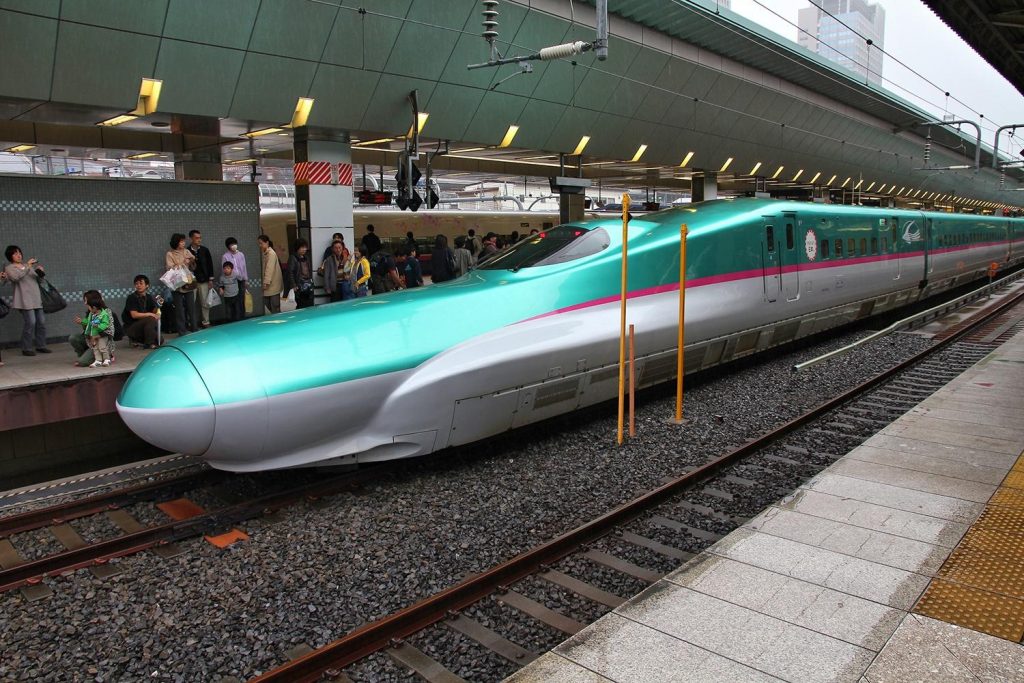
Trains Limited Express
Il existe plus de 100 types de trains Limited Express. Ces services ne desservent que les principales gares japonaises . Tout comme pour le Shinkansen, il est nécessaire de payer un supplément pour voyager à bord du Limited Express.
Le Japan Rail Pass couvre certains de ces trains, mais pas tous. Le coût supplémentaire peut varier entre 400 et 4000 yens.
Trains Express
Bon nombre de trains japonais Express ont été discontinués et transformés en trains Limited Express ou Rapides. Le groupe JR exploite les trains Express actuels, ce qui signifie que les titulaires du Japan Rail Pass peuvent les utiliser gratuitement . Tous les autres passagers doivent payer un supplément.
Le JR Pass couvre également les transferts vers les aéroports principaux , généralement assurés par les trains Express ou Limited Express : l’aéroport de Haneda ( monorail de Tokyo ), l’aéroport de Narita ( Narita Express ) et l’aéroport du Kansai ( Haruka Express ).
Trains rapides
Les passagers ne doivent pas payer de supplément pour emprunter un train rapide. Le prix d’un aller simple est le même que pour les trains locaux.
La seule différence est que les trains rapides sautent quelques arrêts par rapport aux trains locaux, ce qui réduit considérablement la durée du trajet.
Trains locaux
Pour monter dans un train local, vous devrez acheter un billet standard, sans supplément. Les trains locaux peuvent aller d’un point A à un point B, ou former une boucle (comme la ligne Yamanote à Tokyo ou la ligne circulaire d’Osaka ), et s’arrêtent à toutes les gares sur l’itinéraire.
Il est recommandé de ne pas prendre ces trains sur de longues distances car ils sont parmi les plus lents et les moins spacieux au Japon.
Trains spéciaux
Bien que la plupart des trains soient conçus pour les déplacements domicile-travail ou les déplacements quotidiens, il existe de nombreux trains dirigés aux touristes .
Les trains les plus populaires sont les différents trains à vapeur qui circulent sur des lignes plus pittoresques. Ils opèrent principalement le week-end et les jours fériés, ou seulement au cours des mois d’été. La plupart d’entre eux ont été conçus pour attirer les visiteurs vers des sites pittoresques .
Cette stratégie a été lancée avec des trains décorés de personnages populaires auprès des enfants, mais plus récemment, des designers industriels renommés ont été recrutés pour concevoir des trains uniques plus attrayants pour les adultes.
L’un des trains touristiques à avoir été dévoilé le plus récemment au Japon est le train-restaurant Coto Coto à Kyushu, mis en service en 2019.
Billets de train au Japon
Avant de vous expliquer comment acheter vos billets, voici les options de billets de train à votre disposition selon les différents services et compagnies ferroviaires.
Japan Rail Pass
Avec le JR Pass , vous pouvez choisir entre un billet de 7, 14 ou 21 jours , vous donnant accès à tous les trains, bus et ferries du groupe Japan Railways (JR), opérant dans l’ensemble du Japon.
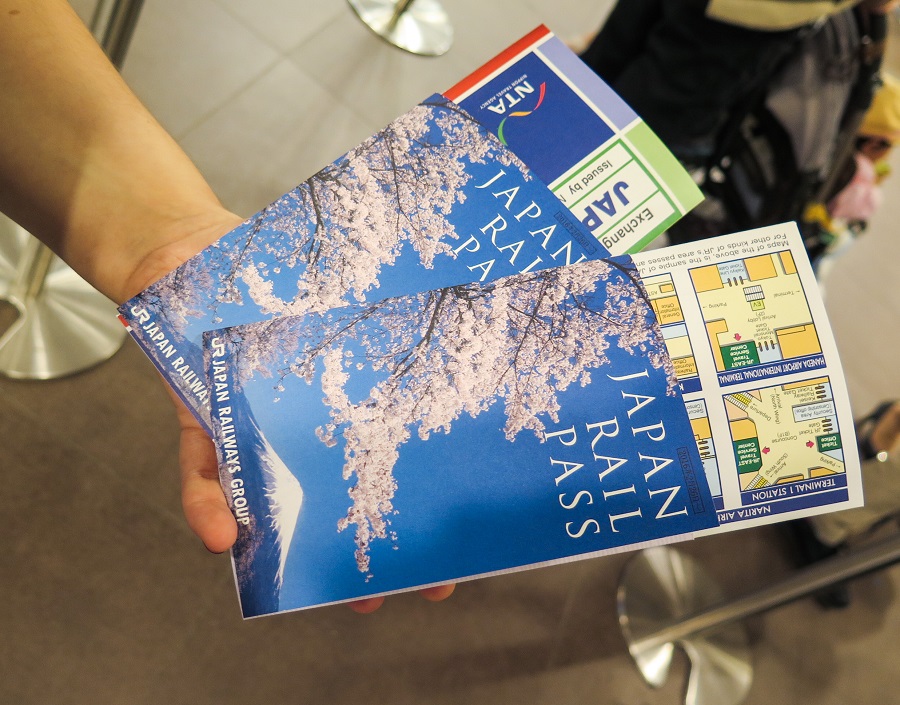
Achetez votre Japan Rail Pass
Billets standards
Un billet standard vous emmènera d’un point A à un point B. Pour les courtes distances, il est facile de les acheter aux distributeurs automatiques que vous pouvez trouver facilement sur n’importe quel quai.
Les cartes IC sont des cartes de transport rechargeables prépayées , qui peuvent être utilisées pour payer votre billet de train ou de bus, comme le Pass Navigo, par exemple. Pasmo et Suica sont les cartes de transport les plus populaires à Tokyo.
De plus, un nombre croissant de magasins et de restaurants acceptent désormais la carte IC pour effectuer un paiement sans contact.
Remarque : Veuillez garder à l’esprit que chaque ville japonaise a sa propre carte de voyage prépayée. La bonne nouvelle est qu’elles sont interchangeables, ce qui signifie que vous pouvez utiliser votre carte Tokyo Suica pour prendre le métro de Kyoto.
De nombreuses villes japonaises proposent des abonnements urbains qui permettent un accès illimité 24h / 24 à tous les moyens de transport de la ville, tels que les trains, les tramways, les bus et le métro.
Ces billets sont également désignés sous le nom de Day Pass. Vous pouvez les acheter à un guichet dans n’importe quelle grande ville du Japon : Tokyo, Osaka, Kyoto, Sapporo, Nagoya et Hiroshima, entre autres.
Comment acheter ses billets de train ?
Les billets pour les voyages de courte distance sont vendus aux distributeurs automatiques , tandis que les billets pour les voyages de longue distance peuvent être achetés aux guichets .
Il n’est pas toujours facile de comprendre comment acheter ses billets aux distributeurs, en particulier s’il s’agit de votre premier voyage au Japon. Mais, ne vous inquiétez pas ! Voici notre guide étape par étape pour utiliser les distributeurs de billets japonais.
Comment utiliser les distributeurs automatiques de billets
- Trouvez la zone de vente de billets dans votre gare (typiquement, elle sera indiquée d’une grande carte).
- Consultez la carte et trouvez le nom de votre destination finale (indiquée en japonais et en anglais). La gare où vous vous trouvez sera écrite en grand (et souvent en rouge).
- Le prix est aussi indiqué sur la carte et, une fois que vous avez déterminé combien coûte votre voyage, tournez-vous vers l’écran de la machine.
- Appuyez sur le bouton « English » dans le coin supérieur droit pour obtenir les instructions en anglais.
- Sur le côté gauche de l’écran, sélectionnez le nombre de passagers.
- Si votre destination coûte 200 ¥, sélectionnez 200 sur l’écran (généralement, vous ne choisissez pas le nom de votre destination mais le prix pour y arriver).
- Vous pouvez également insérer des pièces/billets en premier. Si vous avez ajouté 200 ¥, les options pour ce montant seront indiquées en vert sur l’écran.
- Une fois que vous avez sélectionné et inséré le montant, votre billet sera immédiatement imprimé et vous recevrez votre monnaie (le cas échéant).
Même si la procédure peut sembler compliquée ou trop peu familière au début, ne vous découragez pas. Le deuxième essai sera déjà plus facile !
Remarque : Conservez votre billet jusqu’à la fin de votre voyage. Vous en aurez besoin pour sortir de la gare à votre arrivée à destination.
Comment réserver des sièges dans les trains japonais ?
Tous les titulaires du Japan Rail Pass peuvent réserver leurs places gratuitement . Si vous possédez le JR Pass, vous pouvez simplement vous rendre à l’un des guichets situés dans les gares, indiquer le train que vous souhaitez prendre et c’est tout. Vous recevrez une confirmation de votre réservation de siège en quelques secondes.
La procédure est la même pour les passagers sans Japan Rail Pass. Cependant, ils devront payer un supplément. Le montant exact dépend du type de train et de la classe sélectionnée.
Remarque : Rappelez-vous que les trains japonais sont extrêmement ponctuels. Si vous avez réservé une place, assurez-vous d’arriver à la gare à l’avance.
Se déplacer dans les gares japonaises
Les titulaires du Japan Rail Pass accèdent aux quais de la gare à partir de portiques différents à ceux des billets standards.
Les voyageurs avec le JR Pass doivent se rendre à la cabine en verre située à côté des portiques et montrer leur JR Pass (et leur passeport, si nécessaire) au personnel.
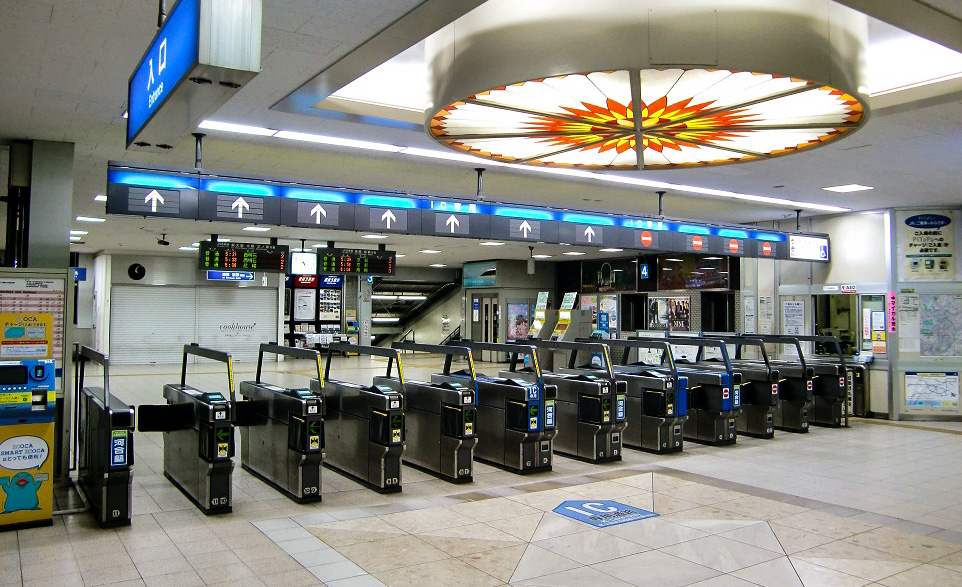
Lorsque vous attendez votre train à la gare, voici certaines choses à prendre en compte :
- Suivez la file d’attente comme le font les Japonais.
- Vérifiez votre voie avant le départ, car plus d’un train peut quitter le même quai.
- Toutes les indications sont affichées sur les écrans en japonais et en anglais.
- Tenez-vous en ligne droite. L’espace personnel et la politesse sont importants pour les Japonais !
- Laissez sortir les passagers avant d’entrer dans le train.
Remarque : Pour plus d’informations sur les gares, consultez notre guide complet sur les gares japonaises .
Où ranger ses bagages dans les trains ?
Voyager en train avec de grandes valises n’est pas recommandé , car les trains ont généralement peu d’espace de stockage. Cette règle ne vaut pas pour le Narita Express et le Haruka Express qui relient les aéroports et sont bien équipés pour les bagages de grande taille.
Les trains Shinkansen comptent des compartiments de rangement supérieurs pour les bagages normaux. Vous trouverez également de la place derrière la dernière rangée de sièges de chaque voiture. Cependant, cet espace est limité et il est possible qu’il ne soit pas disponible.
Consultez le règlement de la Japan Railways pour plus d’informations sur les bagages à bord du Shinkansen .
Remarque : Pour en savoir plus sur le transport des bagages, lisez notre guide sur les consignes et l’envoi de bagages .
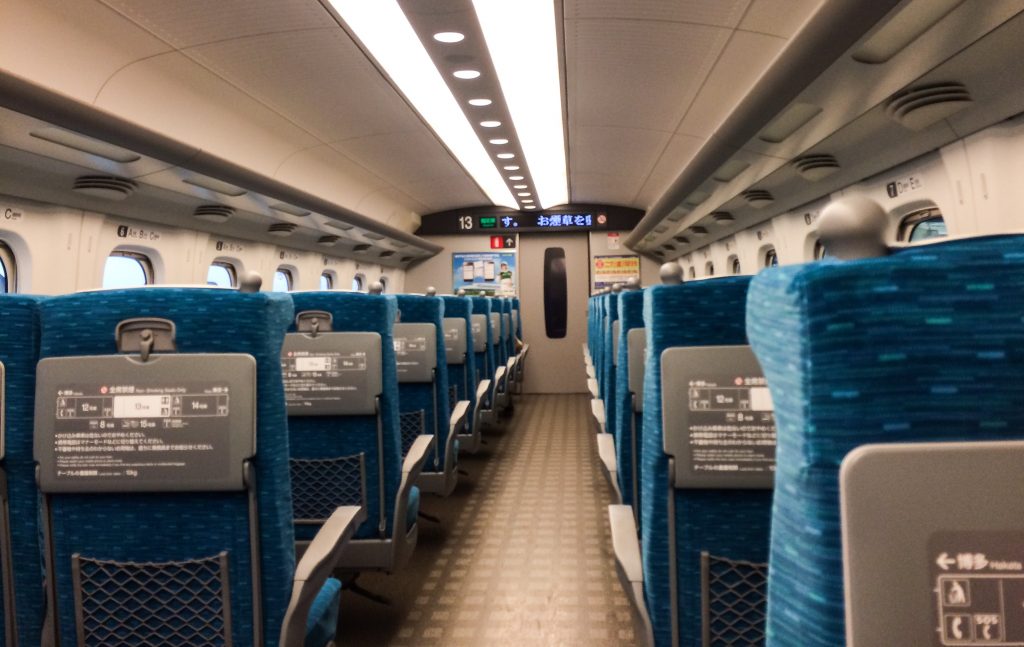
Autres conseils de voyage
Il est important de comprendre que les Japonais suivent une série de règles de politesse en public , en particulier dans les transports.
Évitez de parler au téléphone, d’écouter de la musique forte, de placer vos sacs sur le siège à côté de vous. Veillez à laisser votre place aux personnes âgées, malades ou enceintes.
Une dernière recommandation est de profiter au maximum de votre séjour au Japon, tout en restant attentif aux personnes qui vous entourent.
Photo de couverture – Train local passant à côté de la gare d’Ueno (Tokyo) – Par @chucknado (Flickr)
Related posts
Tours et activités connexes.
Planning a rail trip around Japan? Use Japan Rail Planner to plan your route, find accommodation, and more!
Or browse our route templates ..
Our app helps you plan and book everything you need for your rail trip around Japan.
Plan and visualise your ideal route around Japan.
Easily view and edit your trip itinerary.
Accommodation
Quickly search for accommodation that lines up with your plan.
See how long it takes to travel between Japanese cities by rail.
Share your plan to visit Japan with the world.
Track how many days your Japan Rail Pass would need to cover.
Estimate how much your trip will cost as you edit your plan.
Add notes to your plan as you research your trip to Japan.
- Media & Industry
- Meetings & Events
- Select Language 简体中文 繁體中文(香港) 繁體中文(臺灣) India (English) Bahasa Indonesia 한국어 ภาษาไทย Tiếng Việt Singapore (English) Philippines (English) Malaysia (English) Australia/New Zealand (English) Français Deutsch Italiano Español United Kingdom (English) Nordic countries(English) Canada (English) Canada (Français) United States (English) Mexico (español) Português العربية Japan(日本語) Global (English)
- India (English)
- Bahasa Indonesia
- Singapore (English)
- Philippines (English)
- Malaysia (English)
- Australia/New Zealand (English)
- United Kingdom (English)
- Nordic countries(English)
- Canada (English)
- Canada (Français)
- United States (English)
- Mexico (español)
- Global (English)
- Fujiyoshida
- Shimonoseki
- Ishigaki Island
- Miyako Island
- Kerama Island
- Tokyo Island
- Koka & Shigaraki
- Hida Takayama
- Ginza, Nihonbashi
- Beppu & Yufuin (Onsen)
- Ginzan Onsen
- Nagasaki Islands

- Kumano Kodo
- Shikoku Karst
- Amami Oshima
- Hachimantai
- Omihachiman
- Aizuwakamatsu

- Diving in Japan
- Skiing in Japan
- Seasonal Flowers in Japan
- Sustainable Outdoors
- Off the Beaten Track in Japan
- Scenic Spots
- World Heritage
- Home Stays & Farm Stays

- Japanese Gardens
- Japanese Crafts
- Temple Stays
- Heritage Stays
- Festivals and Events
- Theater in Japan
- Japanese Tea Ceremony
- Cultural Experiences in Japan
- Culture in Japan

- Local Cuisine Eastern Japan
- Local Cuisine Western Japan
- Local Street Food
- Japan's Local Ekiben
- Japanese Whisky
- Vegetarian and Vegan Guide
- Sushi in Japan Guide
- Japanese Sake Breweries

- Art Museums
- Architecture
- Performing Arts
- Art Festivals
- Japanese Anime and Comics
- Japanese Ceramics
- Local Crafts

- Scenic Night Views
- Natural Wonders
- Theme Parks
- Samurai & Ninja
- Iconic Architecture

- Wellness Travel in Japan
- Japanese Ryokan Guide
- A Guide to Stargazing in Japan
- Relaxation in Japan
- Forest Bathing (Shinrin-yoku)

- Experiences in Japan
- Enjoy my Japan
- National Parks
- Japan's Local Treasures
- Japan Heritage
- Snow Like No Other
- Wonder Around Japan

- Visa Information
- Getting to Japan
- Airport Access
- COVID-19: Practical Information for Traveling to Japan
- Anime Tourism
- Countryside Stays
- Accessible Tourism
- Hokkaido Great Outdoors
- Scenic World Heritage in Tohoku
- Shikoku’s Nature and Traditions
- Southern Kyushu by Rail

- Traveling by Rail
- How to Travel by Train and Bus
- JR Rail Passes
- Scenic Railways
- Renting a Car
- Sustainable Travel in Japan
- Travel Brochures
- Useful Apps
- Online Reservation Sites
- Eco-friendly Accommodation
- Luxury Accommodations
- Traveling With a Disability
- Hands-free Travel
- How to Book a Certified Tour Guide
- Volunteer Guides
- Tourist Information Center

- Japanese Manners
- Spring in Japan
- Summer in Japan
- Autumn in Japan
- Winter in Japan
- Cherry Blossom Forecast
- Autumn Leaves Forecast

- Japan Visitor Hotline
- Travel Insurance in Japan
- Japan Safe Travel Information
- Accessibility in Japan
- Vegetarian Guide
- Muslim Travelers
- Safety Tips

- JAPAN Monthly Web Magazine
- Arts & Cultures
- Nature & Outdoor
- Festivals & Events
- Insider Blog
- Things to do
- Local Guides
- Food & drink
- Traditional
- Hokuriku Shinetsu

My Favorites
${v.desc | trunc(25)}
Planning a Trip to Japan?
Share your travel photos with us by hashtagging your images with #visitjapanjp
GUIDE Traveling by Rail
- Stories & Guides
Guide for traveling in Japan by train
Japan's penetrating railways and world-famous Shinkansen (Bullet Trains) interconnect almost every city and corner with lightning speed, convenience, and safety.
Trains in Japan are punctual and reliable
Japan's railways offer impeccable punctuality, safety, and diversity when it comes to travel and transportation in Japan. Whether you're looking for bullet-fast transport between cities, inner-city transport, or a leisurely scenic and cultural journey through Japan, there are options for every taste and itinerary.
Railway types
They say what's important isn't just the destination but also the journey. To break it down, there are three main types of railway systems in Japan, with differing advantages and options.
Japan's leading railway company, Japan Railways (JR), has a well-organized and well–established railway network throughout the country. Among its comprehensive network, the JR-operated Shinkansen, also known as the Bullet Train, connects most of the main cities throughout Japan with world-renowned comfort and speed.
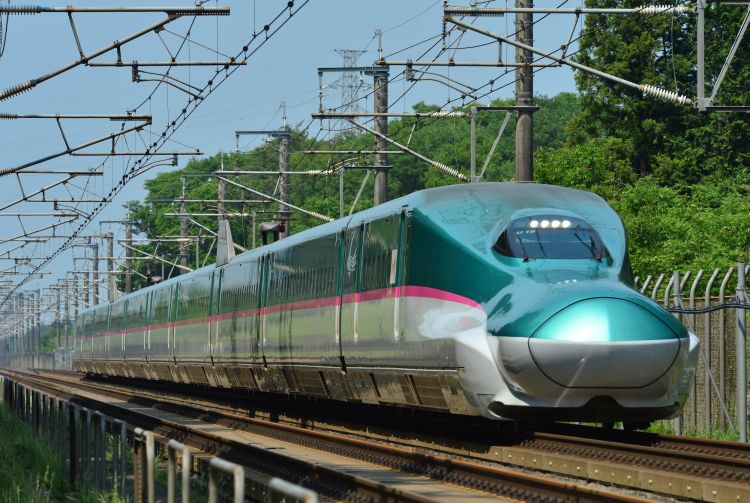
The subway systems are the key to zipping around the major metropolises and their outskirts. These vast and punctual networks are super convenient for moving around cities.
Operated by private companies or municipal governments, various private local railways are convenient means of transport in local areas.
Long distance and regional travel
Train travel gets you directly into the heart of your destination city, saving time and money on travel to and from airports and lengthy check-ins.
The JR-operated Shinkansen, also known as the Bullet Train, is by far one of the speediest and most comprehensive networks for getting around Japan. For more details, please refer to the information in each region on the Shinkansen List below.
Inner-city travel
The subway systems and inner-city sections of JR are the keys to zipping around the major metropolises and their outskirts. These vast and punctual networks will take you almost directly to your destination with minimal wait and hassle. Please refer to the subway maps of major cities nationwide provided below.
There is a wide range of other travel options to suit your tastes
JR and other private local railways have express services, luxurious sightseeing trains, and locally themed carriages for travel both between and within regions. There's a huge range of travel alternatives for families, luxury seekers, cultural enthusiasts, and those with limited time or money.
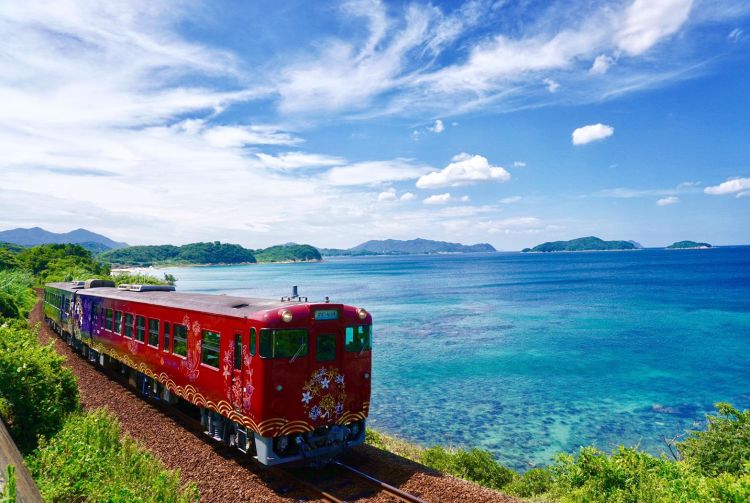
The Shinkansen and longer-distance local railways generally have different classes with reclining seating, fold-down tables, and onboard services that mimic that airline-style "trip" experience. Grabbing a ekiben (packed meal) and beverage to enjoy onboard is a popular pastime and a great way to savor the passing scenery. Kiosks selling various bento boxes can be found on platforms at major stations.
Travel (IC) cards, mobile Apps, and train passes
IC cards such as the Suica and Pasmo can be used across most train systems, ensuring smooth, seamless transfers without the hassle of purchasing individual tickets for each ride.
While credit card tap payments at the ticket gates have not been introduced yet in Japan as of 2022, mobile app versions of major IC cards are readily available. These can be set up to link with your credit card in advance and will allow you to use your smartphone instead of physical cards.
For sightseeing, one-day and multiple-day passes offered in many cities and regions are another economical way to cover an area in a short period of time. The Japan Rail Pass with unlimited rides throughout the country is also a cost-effective option for foreign tourists traveling longer distances.
Some mobile payment systems are not compatible to non-Japanese models of mobile phones or smartphones, so the mobile payment may not be accepted depending on mobile phone models.
Reservations
Shinkansen reservations can be made at ticket counters, online, or via a smartphone app. The JR-EAST Train Reservation, SmartEX, allows you to connect your reservation to your IC card. This means you can simply tap your IC card at the Shinkansen ticket gates to receive your reserved ticket, eliminating the need to pick it up in advance. Check our page on local railways for other reservation options.
Things to note
When reclining your seat on the Shinkansen or limited express trains, make sure you consider the person behind you. A simple “excuse me” goes a long way.
Eating on trains is a pastime reserved for long-distance travel. Note that it is generally frowned upon on local subways or trains.
Even within the same area and station name, different railway companies will arrive and depart from different locations of your destination or departure city. Therefore, choosing the train route most convenient to your destination is recommended.
Stations generally have elevators and staff to help people with wheelchairs or physical disabilities on and off the trains. If you need assistance, ask the station staff at the ticket gates.
* The information on this page may be subject to change due to COVID-19.
- Story & Guide
Did this information help you?
out of found this information helpful.
Thank you for your feedback.
Recommended for you.
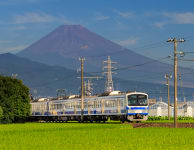
Please Choose Your Language
Browse the JNTO site in one of multiple languages
Taking the train in Japan - all you need to know

Mar 28, 2024 • 11 min read
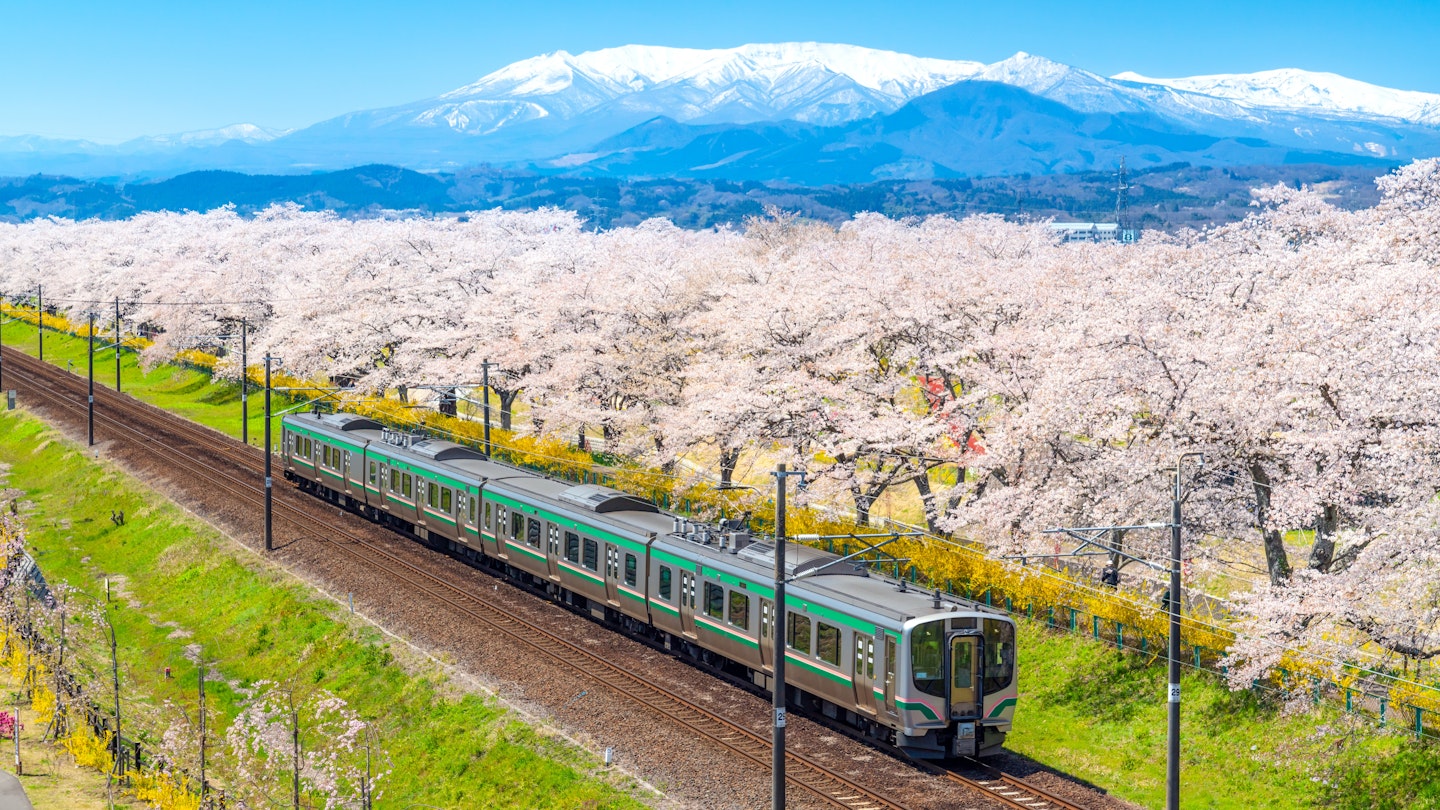
Find your way in Japan with our ultimate guide to rail travel © Chay_Tee / Shutterstock
You will fall passionately in love with trains in Japan .
Japanese people didn’t invent rail travel, but they arguably perfected it. Whether you’re on the newest shinkansen (bullet train) zooming across the country at 320km/h (199mph) or an elderly regional railcar, you can count on your train being scrupulously clean, safely operated, highly reliable, famously punctual and generally a joy to ride.
You can see almost the entire country by train, and with a wide variety of rail passes — including the iconic Japan Rail Pass — you can travel across Japan for less than US$50 per day, including the shinkansen.
Signs are in English even at the smallest stations, translation apps and devices are widely used for complicated questions, and staff are genuinely happy to help travelers.
Japan has an enormous number of train lines and kinds of train, but don’t be put off by the sheer volume: it’s surprisingly easy to navigate , even on your first trip, with your phone’s maps app and a sense of adventure.
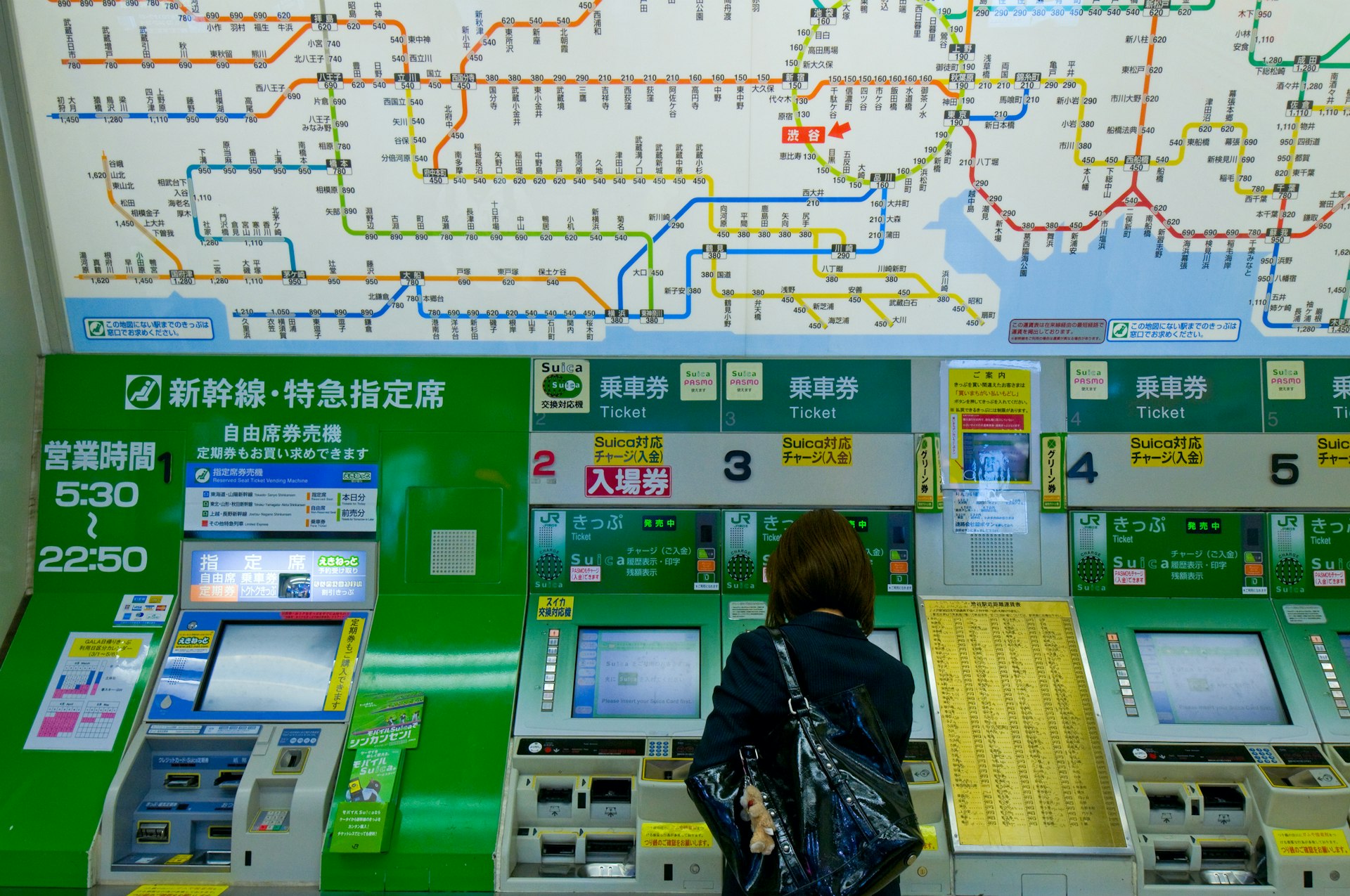
There are different services on the Japanese train network
Trains run almost everywhere in Japan. The main backbone of the network, and the fastest, is the shinkansen. These bullet trains run from Hokkaidō in the far north all the way to Tokyo Station , where you have to change for the shinkansen going to Nagoya , Kyoto , Osaka , Hiroshima and on to Kyushu. For travelers visiting Japan’s main sights , this will be the kind of train you take the most.
The next fastest are Limited Expess trains — “limited” as in “limited stops” — that run between cities and to rural areas on pre-shinkansen conventional lines (the non-high-speed ones). Many run through beautiful parts of Japan, so don’t count them out.
Local trains are the slowest and may even be as small as one single car. “Rapid” trains are fairly rare, and are essentially local trains that skip a few of the smaller stops.
Urban rail, commuter trains and subway lines are widespread in cities. These usually work very similarly to what you might be used to in your home country, although do watch out for limited-stop semi-expresses. The big picture transit maps can look a little intimidating, but most major cities now have a system of colors and station codes in place to help you navigate, and your phone's maps app is great for a quick idea of how to get from A to B.
Confident visitors outside major cities will love Joyful Trains, which are special tourist trains operated largely on weekends and holidays in rural areas. These might be renovated steam trains, or specially themed — JR East’s Koshino Shu’Kura is all about sake, including tastings, while the JR Kyushu A Train is jazz-themed.
Japan’s train stations are destinations by themselves, with larger and newer stations offering a huge range of restaurants for every appetite and budget, and shops ranging from high-quality handmade artisanal local goods to Japanese malls to 100-yen stores. Convenience stores and pharmacies are also often on hand.
Do look out for special local snacks in the omiyage souvenir shops (these are intended for Japanese travelers to take back to friends and colleagues as presents) and for ekiben, local specialty boxed bentō lunches.
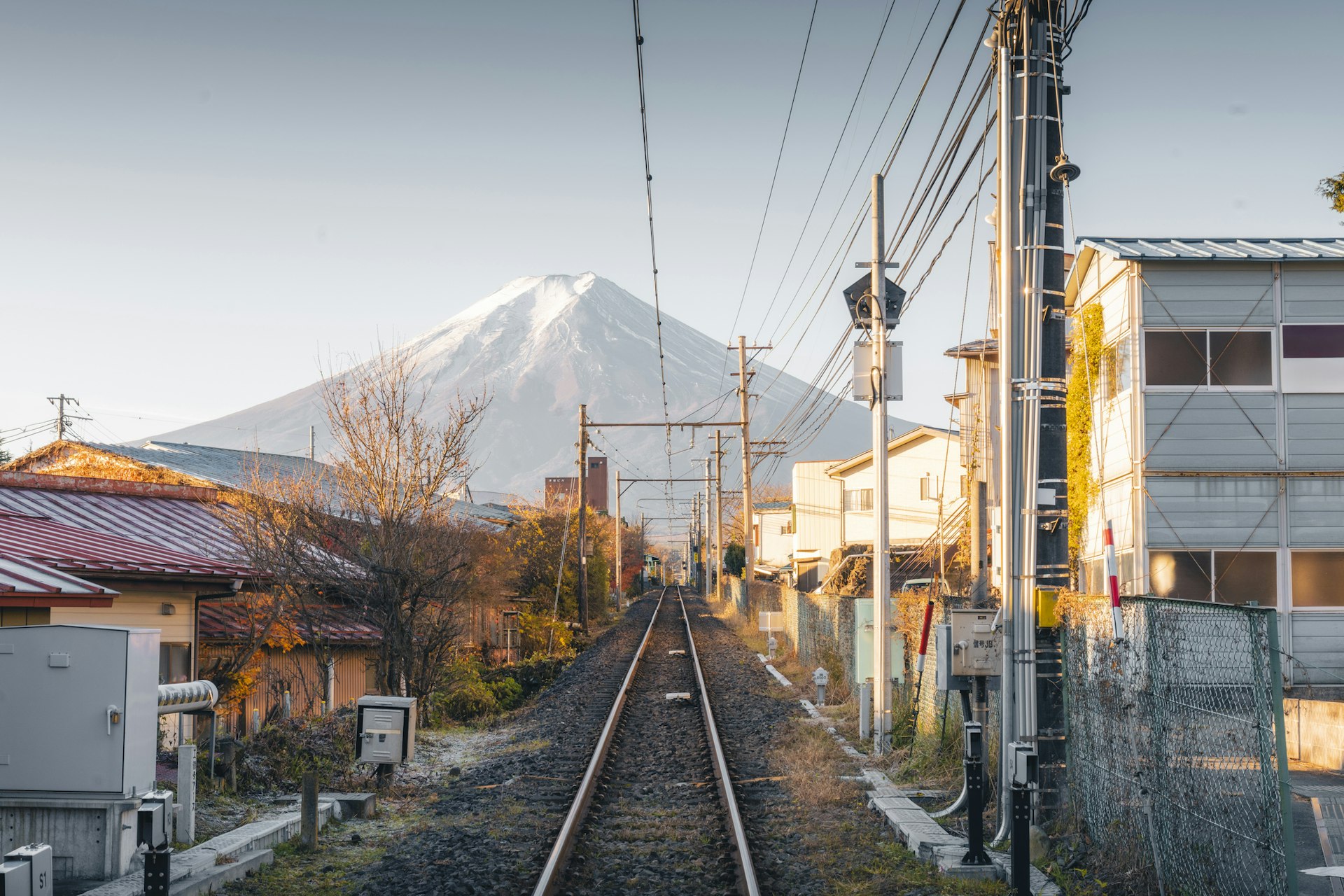
Travel short distances with a prepaid travel card
Coming from overseas, traveling short distances on Japanese railways often feels very inexpensive, while traveling longer distances without a rail pass can feel more costly. Let’s start with shorter distances.
Taking subways and urban rail is simple if you get an IC card – one of the many prepaid stored-value contactless cards – that works in a similar way to Oyster in London or Clipper in San Francisco: just tap on and tap off. Most rail operators across Japan will sell you their version, which are almost all interchangeable when it comes to loading and spending them — you can use an ICOCA card from the Osaka region in Tokyo , or a Pasmo from Tokyo in Sapporo . You can also use iPhones to get a virtual Suica card (JR East's version of a prepaid card) via the Wallet app and load it with money using Apple Pay. If you're using an international Visa card, be aware that JR East has had issues processing those payments in the past, so you may need to use a different credit card.
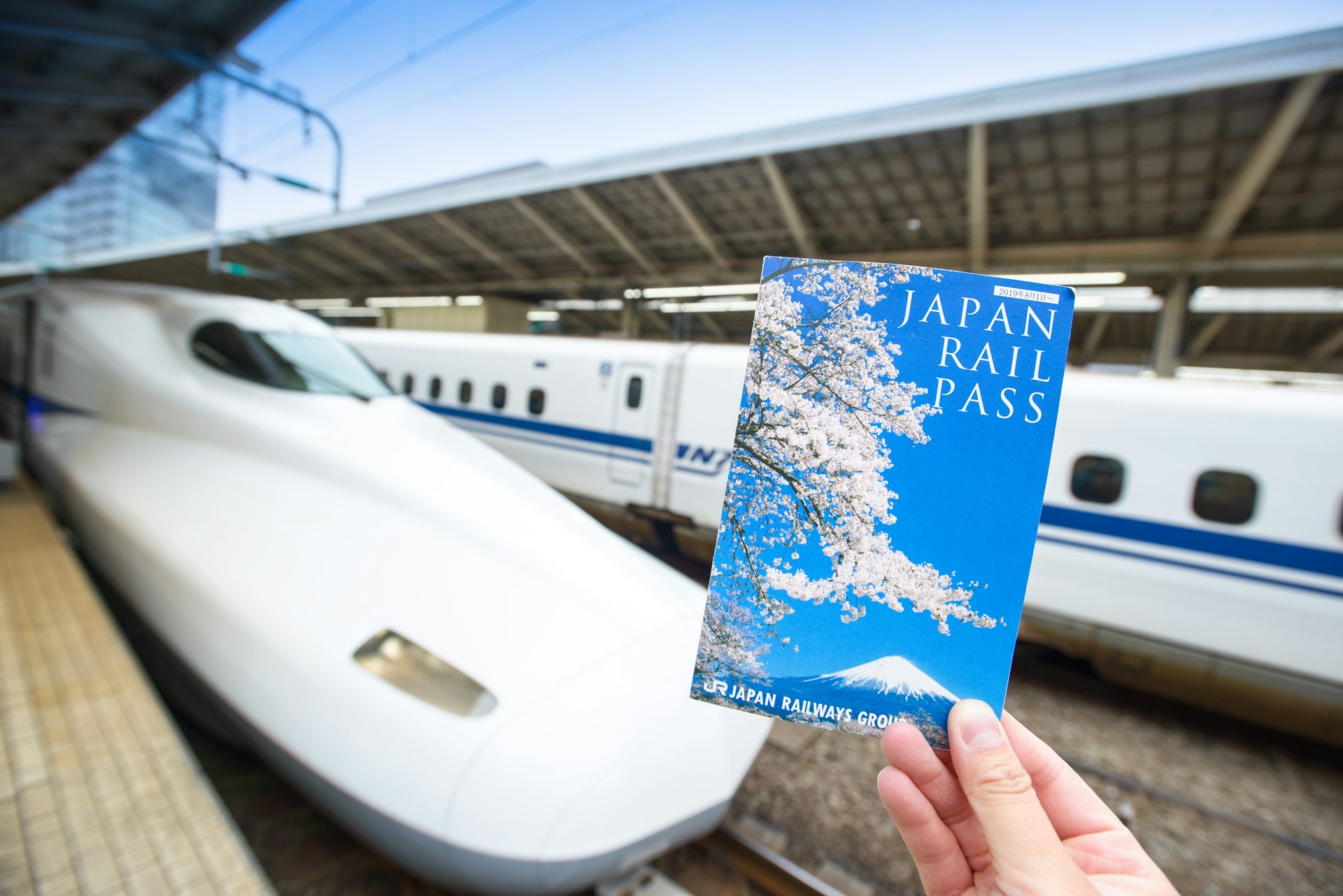
Travel long distances with the JR Pass
Over longer distances, the Japan Rail Pass (¥50,000 or about US$335 for seven days – less than US$50 a day!) is generally a good deal if you are planning anything more than simply Tokyo–Kyoto–Hiroshima–Tokyo, and the flexibility it gives you to take an earlier or later train is an added bonus.
You can either buy the ticket online or from an overseas travel agent. Note that you don’t actually buy the pass itself from overseas — you buy a voucher called an Exchange Order, which you then exchange at a major station (including all international airports) for the pass itself.
If you don’t have a pass, tickets cost the same no matter what time of day you travel, where you book, or how busy it will be — it’s not like airline tickets where that can change wildly. Most overseas travelers still use paper tickets for everything outside urban travel.
Long-distance travel fares are based on two elements:
- Ticket price, essentially the distance you travel
- Whether you want to reserve a seat or not, and in which class, if that’s available: Limited Express and Shinkansen trains will offer non-reserved seat tickets, a reserved seat in standard class, a reserved seat in the Green Car business class, or in some regions a reserved seat in Gran Class (first class).
Tickets can be bought at stations or at JR Travel Service Centers
Use Google Maps or the Japan Transit Planner from Jorudan to find fares, or for JR trains visit your local JR station (look for the “green window” ticket booking office or a JR Travel Service Center), where you can also reserve a seat. At major airports and in Tokyo, you can expect some basic train-related English to be spoken by "green window" ticket agents. JR Travel Service Center staff tend to be more multilingual. Elsewhere, if you speak no Japanese you may well get lucky with someone who speaks English, and you can always lean on your phone's translation apps. Write down (on a printout or even just on your phone's notes app) the dates, times, destinations and details of the train you want, for example: "12 April, Tokyo–Osaka, 12:00, window seat, Mt Fuji side please."
Unless you’re visiting during a major Japanese holiday or want to take a specific Joyful Train, there’s little need to book before arriving in Japan. You can in some cases book online, but it’s pretty complicated and I wouldn’t recommend it to first-time visitors. If you’re confused and want English-speaking advice, head to one of the stations that specializes in Japan Rail Passes . Only a few trains outside the JR network allow prebooking.

There are many rail passes to choose from
Japan has a wide variety of rail passes available to overseas visitors, from the JR Pass valid across the JR network (with a few exceptions like the very fastest trains west of Tokyo) to regional and commuter passes.
The most useful is the Japan Rail Pass in its six variants: 7/14/21 days and standard car or Green Car business-class versions. This is probably what you should get your first time in Japan if traveling outside Tokyo.
Adventurous travelers and long-term visitors, or anyone wanting to go deep in a particular region, could also consider:
- The various regional passes from JR East , including the very useful Hokuriku Arch Pass for traveling the slower way between Tokyo and Osaka via Kyoto and Kanazawa
- The many JR West Passes , including the All Area Pass for most of western Honshu
- The four JR Kyushu passes
- The three JR Hokkaido passes
- The JR Shikoku ALL SHIKOKU pass
You’ll usually need to be visiting with the “temporary visitor” stamp in your passport, and there may be a small discount (a couple of thousand yen or US$5–10) for buying it online or outside Japan. Otherwise, check out the details online or visit a large station, including those at airports: the bigger, the better, and the more likely to have English-speaking assistance.
Train etiquette means not disturbing fellow travelers
Japanese urban trains can be famously crowded during rush-hour, but by and large even Tokyo is no worse than any major global city.
Even if crowded, the etiquette on a Japanese train is to be as quiet as possible and disturb others as little as possible: headphones on quiet, very little chatting, backpack on your front, give up your seat to anyone who needs it more than you.
There is something of a stereotype of loutish tourists yapping away to their traveling companions on long-distance trains. Try not to contribute to it. Separate your trash according to the recycling bins, and always leave the seat as clean and tidy as you found it.
Eating and drinking is fine (even encouraged!) on longer distance trains. General rule: if the seats are subway-style along the sides of the car facing inwards then don’t, but feel free if the seats are airline-style facing forwards. If in doubt, follow the lead of the nearest senior Japanese person.
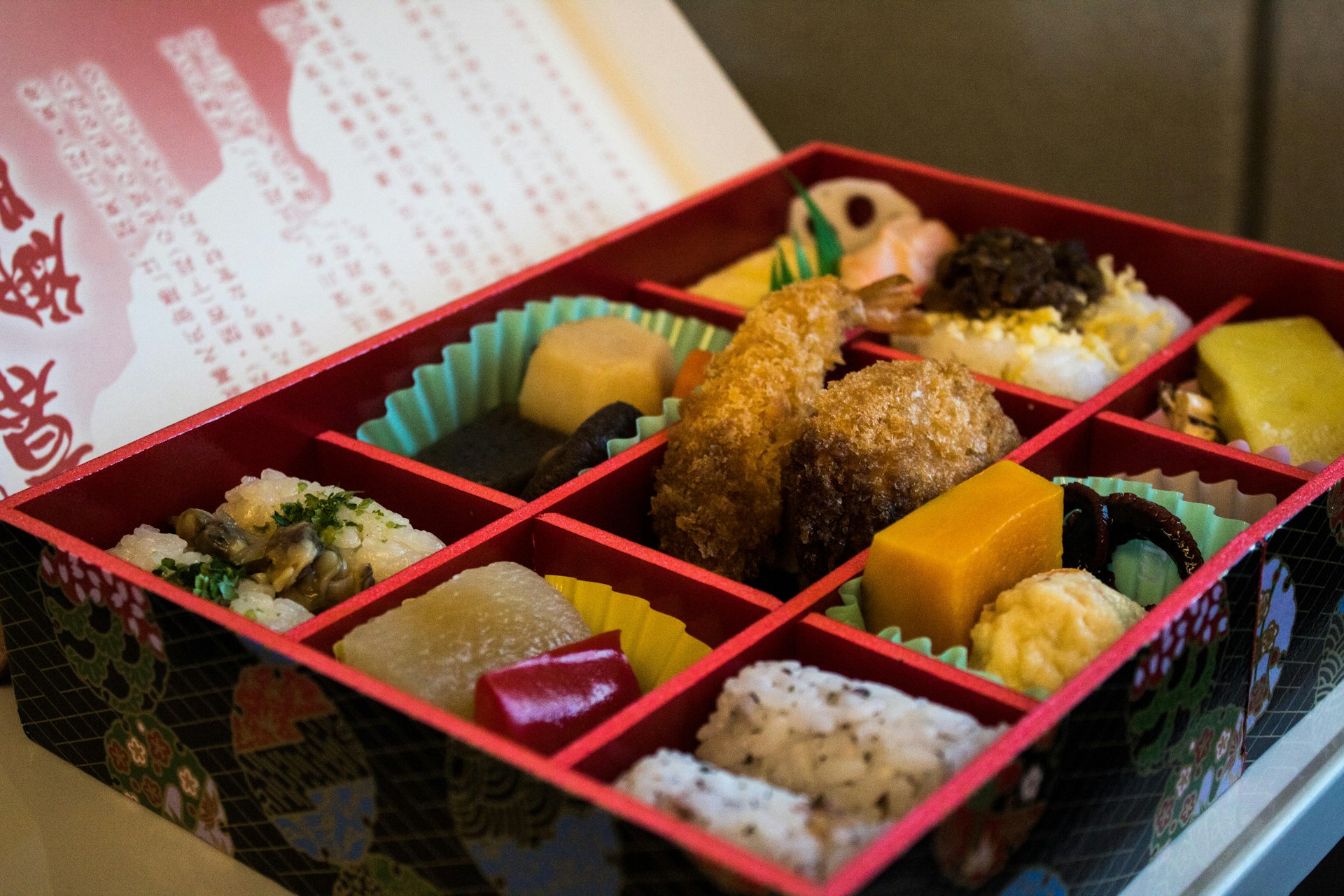
On-board facilities vary depending on the service
With the exception of the Joyful Train tourist excursion services, Japanese trains don’t have buffet cars any more, although you can see what they used to look like at several of Japan’s excellent railway museums. A shrinking number of trains still have a trolley service offering snacks, sometimes bentō and a variety of drinks.
Good news, though: any station smaller than the tiniest rural halt will have a convenience store inside or nearby, which will offer bentō , hot meals, snacks, drinks and essentials. Many larger stations have restaurant complexes, while some smaller ones will have delightful smaller options like a soba or ramen shop.
Long-distance trains will usually have toilet facilities, with newer ones (including all shinkansen and some Limited Expresses) having excellent facilities for disabled passengers, people with reduced mobility and often ostomy facilities too.
Shinkansen and newer Limited Expresses offer two-pin US-style 110V charging ports, while wi-fi is also increasingly available and easy to use.
Most Japanese trains are not set up for luggage bigger than a small carry-on — and “small” here does not include a US-sized rollaboard or anything like a bicycle. On some trains you have to pre-reserve anything bigger. Take advantage of the nationwide luggage shipping services like Yamato – known as Kuroneko Yamato for its black (kuro) cat (neko) logo – that ships larger bags for US$10–20.
These are the best seats for great views
Always take a window seat, whether you’re gazing out on Japan’s sprawling megalopolises from an urban train, watching the country fly by at 320km/h (199mph) from a shinkansen, or enjoying picturesque views from a slow rural train.
On the shinkansen, if you want the best mountain views — including the iconic Mt Fuji between Tokyo and Shizuoka — select a window E seat in standard class and a D seat in the Green Car.
Limited Expresses are wonderful for countryside views, with the Hida from Nagoya to Toyama through the Japanese Alps and the Inaho from Niigata to Akita just two great examples.
Ask for help when navigating busy city networks
Urban trains, commuter rail and subways may have a set of complicated and confusing names with different stopping patterns, especially during rush hour, but this is no worse than figuring out what a “Watford Semi-Fast” is on London’s Tube or how skip-stop works on the subway in New York. As a visitor, just ask station staff or, in a pinch, a fellow passenger — and be prepared to get on the wrong train with a confident smile and a sense of affable adventure.
The majority of trains are wheelchair accessible
A significant majority of intercity, urban rail and subway stations in most major cities (80–90% in Tokyo according to official numbers ) are accessible for wheelchair users, with elevators, stair-climber lifts, and ramps widespread.
Older stations, such as the main Tokyo Station, may be complex and accessible only from certain entrances. Tactile strips to assist blind people or those with reduced visual acuity are almost everywhere.
Accessible Japan is an excellent resource for information, while the very detailed For Safe and Convenient Accessibility website offers route and station search as well as contact details for further assistance. Station staff are keen to help wherever they can.
Many trains offer wheelchair positions, level boarding, with ramps available if you need them. Urban rail and subways have priority seating, and Japan developed the Help Mark badge system for people with invisible disabilities to easily signal their needs. The badge is free from a number of locations in Tokyo , under US$10 from Amazon Japan (consider having it delivered to your first night hotel), or you can DIY your own before leaving home.
Explore related stories
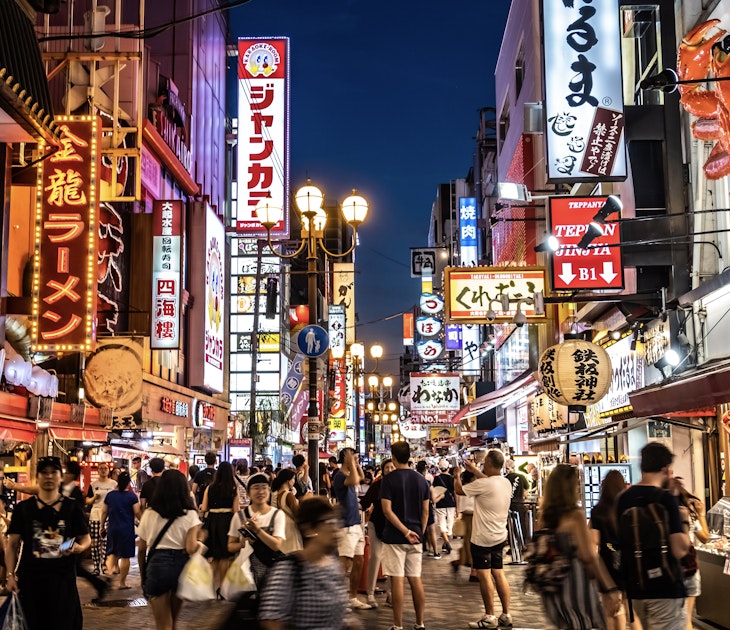
Art and Culture
May 1, 2024 • 9 min read
This four-day Osaka and Kyoto itinerary is a perfect add-on to any trip to Japan.
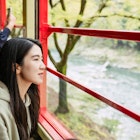
Mar 25, 2024 • 9 min read

Mar 23, 2024 • 11 min read
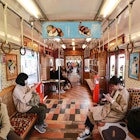
Feb 9, 2024 • 9 min read

Jan 2, 2024 • 11 min read

Dec 17, 2023 • 6 min read
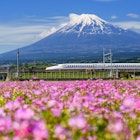
Oct 2, 2023 • 3 min read

Mar 4, 2023 • 8 min read

Mar 16, 2021 • 6 min read
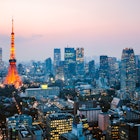
Feb 17, 2021 • 8 min read
- / Prendre le train au japon | Notre guide

Prendre le train au japon | Notre guide
Vous êtes sur le point de prendre le train au Japon et vous vous demandez quels tickets achetés – Pass régionaux ou J apan Rail Pass national ? Comment réserver son siège sur un train à grande vitesse Shinkansen ? Découvrez notre guide complet ! On vous dit tout sur les distributeurs automatiques de tickets , les Midori-no-Madoguchi , les tarifs de train et comment se repérer dans une gare …
Quels trains prendre pour voyager au Japon ?
Les trains régionaux japan railways (jr).
La Japan Railways (JR) est répartie et exploitée par six compagnies régionales privées. Elle est donc découpée en plusieurs entités régionales, qui couvrent la totalité du Japon :
- JR Hokkaido (région de Hokkaido) ;
- JR East (régions de Tohoku, Joshinetsu, Kanto) ;
- JR Central (région de Chūbu) ;
- JR West (région du Kansaï) ;
- JR Shikoku (région de Shikoru) ;
- JR Kyushu (région de Kyushu).
Un pass régional est idéal pour les voyageurs qui connaissent leur itinéraire à l’avance et souhaitent découvrir des territoires précis.
Le réseau national Japan Railways (Japan Rail Pass)
Le forfait Japan Rail Pass ( JR Pass ) permet de voyager de façon illimitée dans tout l’archipel. Réservé aux touristes, ce pass national peut être d’une durée de 7, 14 ou 21 jours consécutifs et permet d’aller presque partout. Cette option est intéressante pour les voyageurs souhaitant découvrir plusieurs régions.
Les trains à grande vitesse (Shinkansen)
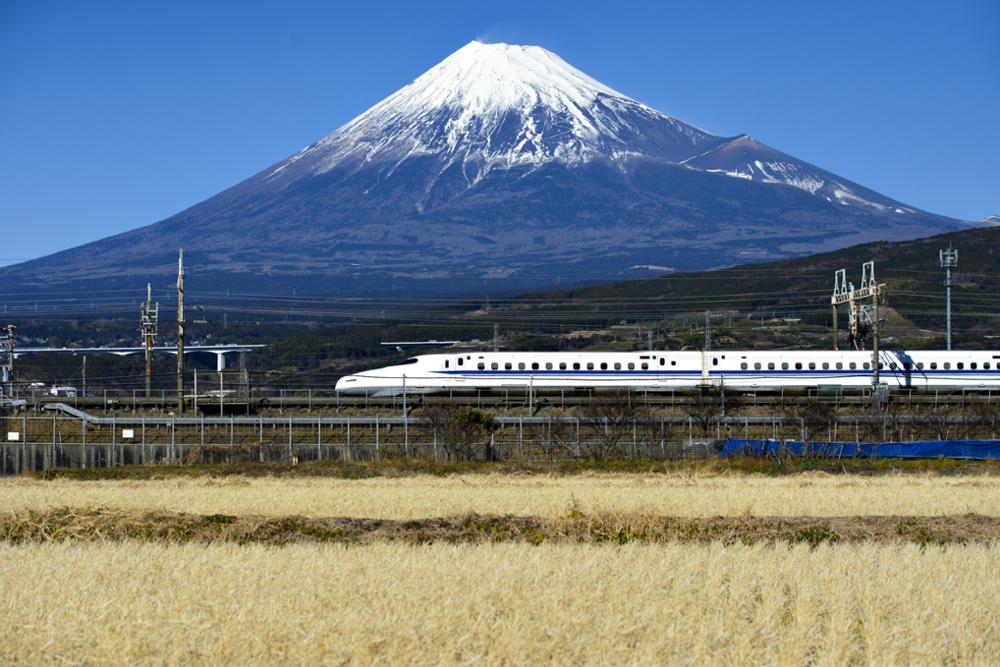
- Tōkaidō (de Tokyo à Shin-Osaka, en passant par Nagoya et Kyoto) ;
- Sanyō ( de Shin-Osaka à Hakata, en passant par Kobe et Hiroshima) ;
- Tōhoku (de Tokyo à Shin-Aomori, en passant par Sendai et Morioka) ;
- Jōetsu (de Tokyo à Niigata) ;
- Hokuriku (de Tokyo à Kanazawa) ;
- Kyūshū (de Hakata à Kagoshima-Chuo) ;
- Hokkaido (de Shin-Aomori à Shin-Hakodate Hokuto sur l’île de Hokkaido) ;
- Yamagata (de Tohoku à Fukushima à Shinjo) ;
- Akita Shinkansen (de Morioka à Akita).
À savoir : Le JR Pass donne un accès illimité à tous les Shinkansen, à l’exception des trains express Mizuho et Nozomi.
Les trains des compagnies privées
Il existe aussi des compagnies ferroviaires privées, avec un fonctionnement et des prix à peu près équivalents au réseau Japan Railways. Elles assurent souvent les liaisons entre les grandes lignes ou desservent les grands sites touristiques. Le JR Pass ne fonctionne pas sur ces lignes privées.
Comment acheter un ticket de train au Japon ?
Les billets des trains régionaux et tgv shinkansen.
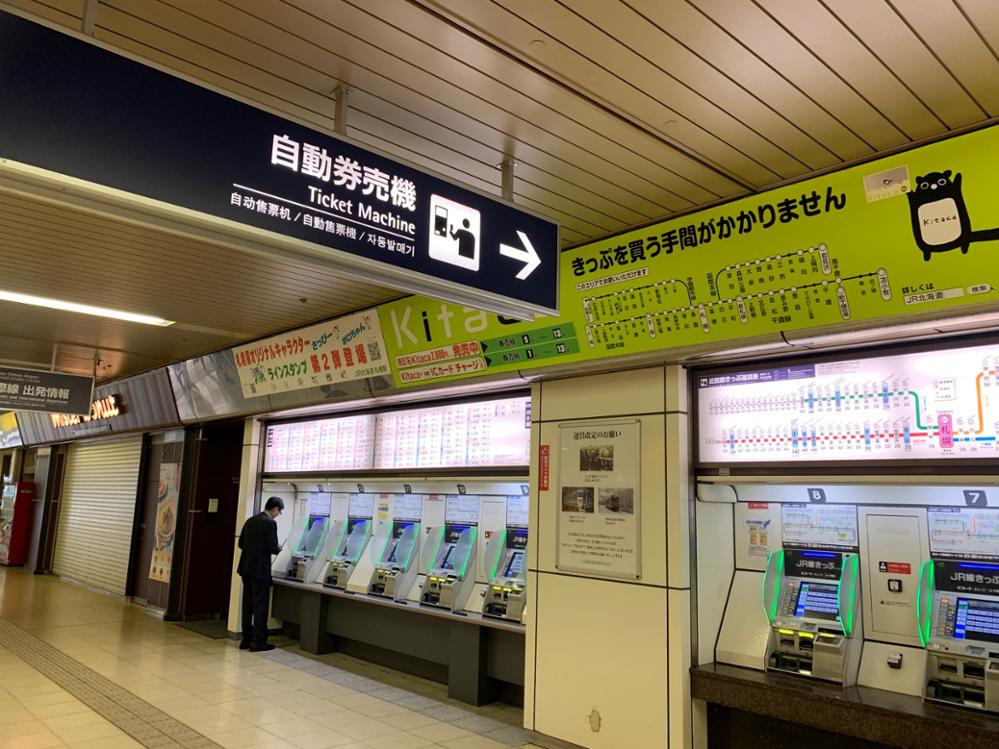
JR Ticket Office ( Midori-no-Madoguchi )
Ce comptoir est reconnaissable à son logo vert représentant un homme assis sur un siège. Il est possible d’y acheter des billets standards pour les trains régionaux et les trains Shinkansen .
Excepté les TGV, les trains n’ont pas de sièges attribués à une réservation. Pour être sûr d’avoir une place assise, il est préférable de payer un supplément. On parle de jiyuseki (siège dans une zone non réservée, où il est possible de s’asseoir où l’on veut) et de shiteiseki (siège réservé).
Les distributeurs de tickets automatiques (avec ou sans siège réservé)
Les tickets pour des voyages de courtes distances peuvent aussi être achetés à un distributeur automatique. Attention, pour acheter des tickets de train ET réserver des sièges, il faut utiliser des distributeurs dédiés. Il est possible de payer en carte bancaire et en billets yens .
À noter : il est autorisé 2 bagages par voyageur, dans les limites de 60 kilos et 250 cm au total. Pour des sacs plus volumineux, il faut réserver un siège spécial « gros bagage » (réservation gratuite avec le JR Pass ). Un voyageur n’ayant pas réservé devra déplacer ses bagages dans une zone dédiée et payer ¥1,000 (environ 7 €) non couverts par le Japan Rail Pass .
Le Japan Rail Pass (JR Pass)
Un JR Pass peut être acheté en France, avant votre départ. Il existe des agences qui les vendent en ligne ou à leur comptoir. Une fois au Japon, vous devrez valider votre pass auprès d’un Midori-no-Madoguchi ou d’un distributeur automatique (dans ce cas, il faudra scanner le QR code de votre pass pour obtenir un billet).
Quels sont les tarifs des trains japonais ?
Prix des billets de train standards.
Se déplacer au Japon peut être plus ou moins cher. Cela dépend des trajets et du type de train choisi. En effet, les trains à vitesse moyenne ( Limited Express , Express , Rapid ou local – le plus lent de tous) sont moins chers que les TGV.
Les pass régionaux coûtent une centaine d’euros en moyenne, pour une durée de 5 à 7 jours. Le prix d’un billet de train est également plus élevé si vous décidez de réserver votre siège. Le prix de cette option varie en fonction des périodes de réservation, et coûte environ 5 €.
Prix des billets de trains TGV Shinkansen
Un billet de train Shinkansen dépend du trajet (plus la distance est longue, plus il est cher) et de la classe du billet. Il en existe trois :
- Billet standard : seconde classe ;
- Billet Green-car : première classe, avec sièges attribués et inclinables (qui nécessite l'achat d'un JR Pass spécial) ;
- Billet Gran-class : classe de luxe, avec grand confort et nourriture gratuite (réservable seulement sur certains Shinkansen et incompatible avec le J R Pass ).
Les TGV permettent de voyager en un temps record. De fait, leurs billets sont plus onéreux que les autres trains. Ils offrent aussi des prestations supplémentaires, comme le WiFi (peu de trains offrent un accès).
Prix du Japan Rail Pass
Les tarifs du Japan Rail Pass ont peu bougé depuis sa mise en place, il y a plusieurs décennies. Seule la hausse de la TVA nationale peut avoir une influence sur ses prix (ce qui est assez rare). Les tarifs de billets standards sont :
- Pour 7 jours : 206 € (29 650¥) ;
- Pour 14 jours : 329 € (47 250¥) ;
- Pour 21 jours : 421€ (60 450¥).
Les billets à prix réduits
Il n’existe pas de tarifs préférentiels, exceptés pour les enfants de moins de 12 ans. Entre 6 et 11 ans, ils bénéficient de 50 % du prix d’un billet adulte. Entre 0 et 5 ans, ils voyagent gratuitement sur des sièges non réservés. La gratuité et la réduction de 50 % ne s’appliquent pas sur certaines options/billets (Green-car, siège réservé, etc.).

Comment se repérer dans une gare et poinçonner son ticket ?
La signalétique.
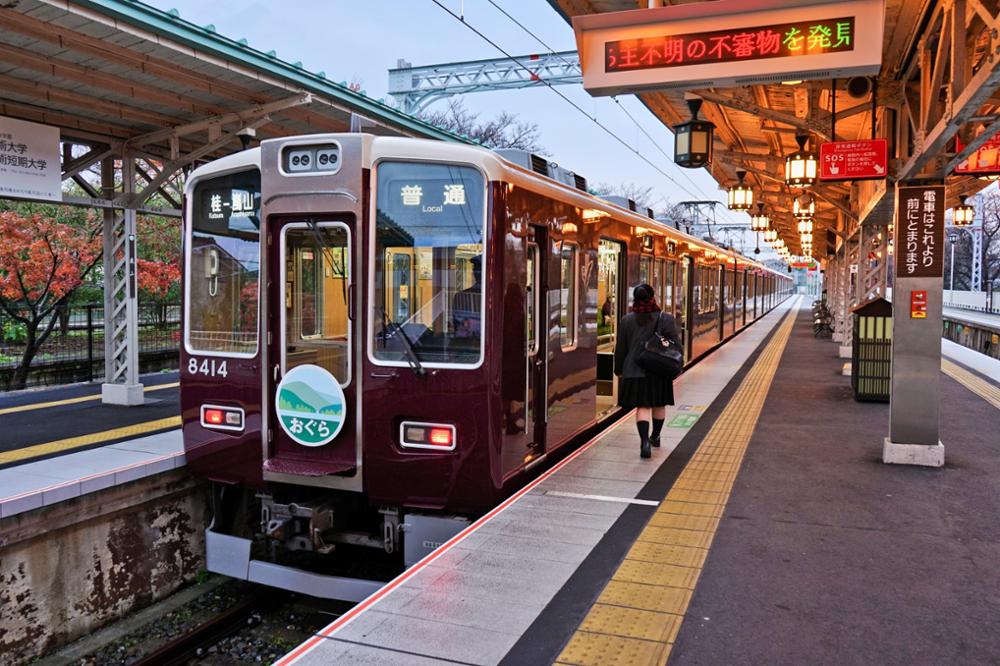
Le poinçonnage
Comme les billets de train n’ont pas de sièges attribués, il n’est pas nécessaire de les poinçonner. S’il s’agit au contraire d’un ticket avec siège réservé, ou d’un billet de TGV, il doit être validé avant l’accès aux quais. Si vous avez opté pour un Japan Rail Pass , il suffit de le montrer aux agents situés aux portiques d’entrées et de sorties (sans franchir les « tourniquets »).
(Bon voyage) !
Audrey Denjean
- février (2)
- septembre (3)
- octobre (4)
- novembre (3)
- juillet (1)
- septembre (2)
- janvier (1)
- janvier (2)
- février (1)
- septembre (1)
- octobre (1)
- novembre (2)
- décembre (2)
- octobre (2)
- juillet (37)
- novembre (5)
- décembre (1)
Abonnez-vous à nos lettres d'information
Au fil du Japon est une agence de voyage spécialisée dans les voyages sur-mesure au Japon. Notre équipe, francophone, est installée en plein coeur de Tokyo et sera vous faire bénéficier de son expertise pour construire avec vous un voyage à votre image.
Au fil du Japon est membre du réseau d'agences locales Nomadays. Vivez votre voyage sur mesure avec une agence locale spécialiste du Japon.
Call Us: +44 (0)20 8191 0620 | Email Us: [email protected]

Exploring Japan’s Opulent Rails: A Guide to the Most Luxurious Train Journeys in Japan
Hop onboard as we embark on a lavish adventure into the world of luxury trains in Japan! In this guide, we’ll look closer at luxury Japanese train travel and unveil the secrets behind how and why these indulgent escapes are so revered. From the panoramic views to world-class dining experiences, get ready to discover the pinnacle of rail travel sophistication in the Land of the Rising Sun.
Seven Stars in Kyushu: Japan’s Premier Luxury Sleeper Train Experience
Ranked as the top choice in Condé Nast Traveller’s Readers Choice Awards 2023 list for The Best Train Trips in the World, embarking aboard this Japanese luxury sleeper train requires more than simply purchasing your ticket and packing your bag. Competition for places can be intense, leading to a lottery system deciding who gets a cabin. Seven Stars in Kyushu provides a genuinely sumptuous voyage no matter what journey you choose. From the moment you step onboard this Japanese luxury train, a world of refined comfort and impeccable service will envelop you. Whether relaxing in your deluxe suite, enjoying a cocktail in the bar, enjoying tea in the tea room, or experiencing local delicacies in the Junpiter Dining Car, it’s plain to see why many consider Seven Star In Kyoshu Japan’s most luxurious train.
Spacia X: A Futuristic Journey on Japan’s Luxury Train Rails
With the Spacia X design language taking a nod from Edo culture, the fretwork and bamboo wickerwork detailing on this luxury train in Japan are a spectacular celebration of traditional arts and crafts. Spacia X offers a Japan luxury train journey that seamlessly merges the past with the future, whisking passengers through stunning countryside in unmatched style along the Tobu Railway Nikko Line. These Japan luxury train tours indulge their guests in gourmet delights as they take in the views from the vast panoramic windows. Spacia X is more than just a method of transport to get you from Asakusa to Nikko. It is Japan luxury train travel in its pomp.
Twilight Express Mizukaze: The Ultimate Japanese Luxury Sleeper Train Adventure
Can you picture yourself gliding through the picturesque countryside on a Japanese luxury sleeper train heading toward Kyoto or Shimonoseki? A Japan luxury train tour on the Twilight offers passengers an extraordinary journey. The carriages offer supremely plush interiors adorned with traditional motifs that make for a highly comfortable trip. Once onboard, exquisite Japanese gourmet meals are served to the highest standards. The Twilight Express Mizukaze furnishes those lucky enough to have a ticket a glimpse into a bygone era of travel romance. This is a high-end Japan luxury sleeper train where you’ll be able to indulge in an enchanting odyssey that epitomises the quality and comfort of the most luxurious train in Japan.
Tohoku Emotion: Gourmet Dining on Japan’s Luxury Train Tour
Although far from being the most expensive train ride in Japan, this exquisitely designed train comprises three railcars: One car is an open kitchen, car number two contains private compartments, and the third is the fabulous dining area. Jump onboard this luxury train in Japan for the non-stop outbound journey from Hachinohe to Kuji or the return leg that stops at Taneseshikaigan, Same, and Hon-Hachinohe. Passengers enjoy magnificent views along the Sanriku Coast, and this luxury Japanese train slows down at the most scenic points of the journey to allow guests to absorb the region’s natural beauty. The incredible cuisine served includes a lunch course, afternoon tea, and desserts, depending on which journey is taken, all adding to how memorable this trip is.
Sunrise Seto & Sunrise Izumo: Overnight Elegance with Japan’s Sleeper Train Service
If you’re visiting Japan, luxury train holidays don’t get any more exciting than an overnight adventure on one of these trains. The Sunrise Seto and the Sunrise Izumo are long-distance luxury trains in Japan that are coupled when they leave Tokyo before separating at Okoyama and heading to Izumo and Takamatsu, respectively. Each Japanese luxury sleeper train comprises seven cars and represents the country’s last regularly scheduled sleeper service, providing passengers with onboard showers, vending machines, sleeping platforms, and stretch-out seats. Passengers on the inbound journey stop at Sannomiya and Osaka once Seto and Izumo have re-coupled. The last of a dying breed in Japan, luxury train journey experiences like this must be savoured before they disappear entirely!
Shiki-Shima Exclusive Luxury Train Travel Through Japan’s Scenic Beauty
The Shiki-Shima offers you the opportunity to take the most expensive train ride in Japan, and it’s well worth it as the journey gives passengers a unique insight into Japanese culture and the country’s breathtaking wild beauty. Highly sought after and habitually at capacity, this Japan sleeper train has a range of luxurious suites, including the two-floor Shiki-Shima Suite, complete with traditional furnishings and a bespoke cypress bathtub where you can rest and relax. The onboard dining room reaffirms Shiki-Shima’s reputation as Japan’s most luxurious train as guests are served stunning fine dining cuisine that exploits seasonal ingredients from each region. If your pockets are deep enough, Japan train luxury like this will be hard to beat.
Aru Ressha: A Gastronomic Voyage on Japan’s Luxury Train
The Aru Ressha is a luxury train in Japan that had its name revived back in 2015 after over one hundred in the shadows. This luxurious train operates between the port town of Hakata and Yufuin, offering travellers one round trip daily. Boasting two stunning rail cars that combine two and four-seat configurations, using maple wood in car one to private rooms in car two with darker, richer walnut, this luxury train in Japan is truly impressive. The dining experience during this Japan luxury train journey is second to none and directed by world-clas chef Yoshihiro Narisawa. His captivating menu offers passengers fish and meat dishes, sweets, and mini-sweets created using the finest products, treating diners to an unforgettable culinary escapade.
Saphir Odoriko: Coastal Elegance on Japan’s Luxury Train Route
If you’re exploring travel options, you’ll have to go a long way to find a better way than this to travel in Japan. Train luxury like this gives passengers access to authentic attractions, spectacular natural beauty, and places of historical and cultural significance. This exquisite luxury train in Japan is more than just a mode of transportation. It’s an immersive journey through Japanese history. Once onboard one of these Japan luxury train tours, travellers are treated to incredible gourmet delicacies in absolute comfort while watching the stunningly attractive landscapes slide by as they gaze through the panoramic windows of their carriage. With meticulously designed and finished interiors that provide a traditional Japanese aesthetic, this is one of the luxury trains in Japan that must be experienced.
36+3: A Unique Thank You from the Most Luxurious Train in Japan
A trip onboard this spectacularly finished black and gold luxury Japanese train is like stepping into a time capsule where the ultimate elegance combines with contemporary mastery. Passengers can recline in sizable, plush cabins trimmed with traditional Japanese craftsmanship while traversing the picturesque landscape. The onboard serenity offers luxury train travel in Japan at its finest. Exquisite dining, attentive service, and observation decks all add to the magnificence of a stay onboard during one of the five scheduled scenic routes. Depending on which day you travel, the 36+3 will allow you to see seven prefectures from a starting point of Fukuoka.
THE MOST POPULAR QUESTIONS
Japan’s luxury train faqs, what makes japan’s luxury trains different from regular train services.
Luxury train travel in Japan surpasses regular rail services by some distance, even though the rail system in the country is well-known for being very comfortable, clean, and superbly efficient. In Japan, luxury train tours really do go above and beyond and offer passengers opulent accommodations, world-class dining, and exclusive onboard experiences such as luxury bathing facilities, observation decks, and two-storey suites. The Japanese prioritise comfort and quality to create a unique travel experience that combines incredible Japanese hospitality with breathtaking landscapes, making Japan’s most luxurious train journeys unforgettable.
How can I book a journey on one of Japan’s luxury sleeper trains?
Booking your place on luxury trains in Japan is a simple process. You can visit the train operator’s official website or contact several reputable travel agencies specialising in luxury train travel. Some services offer Japan luxury train holidays on a lottery system if they receive more booking applications than available spaces, so booking well before your travel date is advisable.
What are the price ranges for luxury train travel in Japan?
The cost of travelling on luxury trains in Japan can vary significantly, from as low as a couple of hundred dollars to over ten thousand dollars for the most expensive train ride in Japan. These figures are per person, depending on route, the journey duration, the level of luxury offered and subsequent amenities. These high-end trail journeys regularly feature incredibly lavish accommodations and fine gourmet dining experiences catering to the discerning traveller seeking unparalleled comfort and service. The luxury train Japan price variation is based on the selected package of the traveller, but there are often good deals to be had, although you’ll need to be quick as these tickets sell very quickly.
Can I experience Michelin-star dining on Japan’s luxury trains?
The Japanese are renowned for their incredible dining experiences, which are carried through into Japan’s most luxurious train journeys. The Seven Stars in Kyushu and the Twilight Express Mizukaze offer their passengers Michelin-star dining. Both trains showcase a top-notch culinary adventure, with gourmet meals prepared by highly skilled chefs using fresh, regional ingredients. Fine dining is all part of the grand appeal of a Japan luxury train tour and helps to create a more memorable journey.
explore the world of luxury trains
Explore the luxury train travel company.
Explore Our Range of Luxury Rail Tours Across the Globe. Learn About The Different Luxury Trains We Can Offer. View Our Tours by Region & Destinations. View our train departure Calendar.
Similar Posts

Seven Lavish Trains with Dining Cars
Seven Lavish Trains with Dining Cars of Unparalleled Elegance Introduction – Uncovering The Ultimate Train Dining Experience Welcome to…

The Best Luxury Sleeper Car Train Trips in the World
The Best Luxury Sleeper Car Train Trips in the World in 2024 Indulge yourself in the world of sleeper…

8 Most Luxurious Train Suites
A Journey Into The World’s 8 Most Luxury Sleeper Cars & Train Suites Introduction – Luxury Train Sleeper Cars…

Top 3 Luxury Train Journeys in the UK
Top 3 Luxury Train Journeys in the UK for 2024 When we envisage luxury train travel in England, we…

The Top 5 American Luxury Train Journeys
Luxury Train Travel in the USA: Discover the Top 5 American Luxury Train Journeys If you’ve ever mulled over…

Rail Journeys in New Zealand
Experience the World-Famous Scenic Luxury Rail Journeys in New Zealand! Generally, when we think about the world’s most extraordinary…
深遊 探訪 Shin-Yu Tan-bo Experience the hidden depths of Japan. Enjoy the sheer beauty of the fleeting of time. Take a train trip in eastern Japan for a truly extraordinary lifetime experience. This is the very essence of SHIKI-SHIMA.

Your Journey on TRAIN SUITE SHIKI-SHIMA
Learn about our current and previous courses., trip application, we have started accepting applications for departures from december 2024 to march 2025., the cruise train.
See the train where you will enjoy your relaxing, yet enriching journey on the luxurious TRAIN SUITE SHIKI-SHIMA. READ MORE

Feel SHIKI-SHIMA
Your journey.
On TRAIN SUITE SHIKI-SHIMA’s exciting range of journeys, you can experience Japan’s rich, beautiful nature and the unique culture that permeates Japan’s local industries and daily life, with the leisurely pace and comfortable space that only a luxury train can provide. READ MORE
We are accepting applications for TRAIN SUITE SHIKI-SHIMA here.
We want our guests to experience the joy that comes with realizing that there are still things they don’t know.
Now you can find out more about the project members who worked on the design, menu, uniforms and music for TRAIN SUITE SHIKI-SHIMA to bring the concept of Shin-yu Tan-bo (Journeys to Discover Hidden Depth) to life.
For your safety
We take the following measures to ensure you have a safe journey aboard TRAIN SUITE SHIKI-SHIMA.
- Portuguese, Portugal
Japan train schedule and price
- Published on : 20/01/2017
- by : Japan Experience
- Add to favorites

©Simon Launay, unsplash
Main train journeys schedule and cost
In Japan, the railway network is the best way to travel but it can sometimes be difficult to find the right way to reach your destination. Here are two tables to help you plan your itineraries within Japan quickly and easily : Japan Train Schedule and Japan Train Costs.
Taking the train in Japan
In Japan, the railway network is the best way to travel, especially with a Japan Rail Pass or pre-ordered train tickets to your key destinations. However, it can sometimes come with some hurdles for navigating around.
Here is some tips to use Hyperdia :
- Fill in your departure station and the system will automatically provide the station that you can click on. It is the same for your arrival station. Then choose your desired departure time.
- Click on "More Options" to choose to go via a certain station, avoid certain types of trains and much more...
- If your journey is quite long, the system will suggest an internal flight, if you do not want these options shown, deselect "Airplane" and "Airport Shuttle Bus."
- If you have a Japan Rail Pass or if you want to know if your journey is eligible for using the Japan Rail Pass , click on "More Options" and uncheck the "Nozomi / Mizuho / Hayabusa (Shinkansen)" (unless you want to ride the Hokkaido Shinkansen to Sendai, Morioka, Shin Aomori, Kikonai or Okutsugaru-Imabetsu) and " Private Railway " boxes.
You will see the details of your trip if possible with the Japan Rail Pass.
Please notice that if you want to travel from Tokyo to Shin-Aomori or Shin-Hakodate-Hokuto (Hokkaido) with the Japan Rail Pass, you can use the Hayabusa train so you must check the Nozomi/mizuho/hayabusa box. You will have the details of your trip as possible with the Japan Rail Pass.
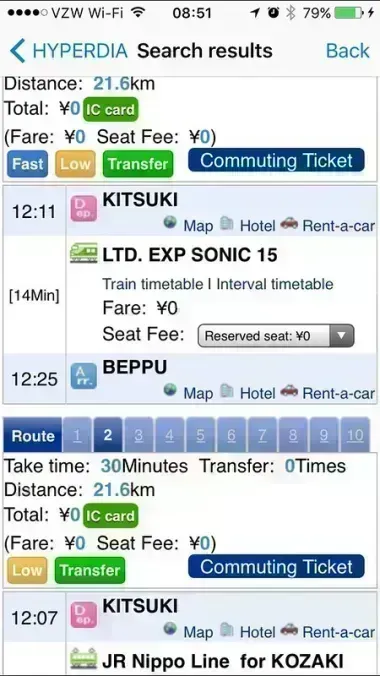
©Martin Lewison,https://www.flickr.com/photos/tags/flicker/,CC BY-SA 2.0,https://www.flickr.com/photos/milst1/32732698633/
Here are the prices in USD for the main routes (1 USD = 113 ¥ ) . The table above represents the train fares of "non-reserved seats". The train is not the cheapest means of transport of Japan (for example night buses are cheaper) but it is the most convenient and comfortable.
You can find the train fares using Hyperdia, you can see the price of the top left hand side, the total price includes : • The price of the journey : this is fixed.
• The seat prices. This depends on the type of seat you choose :
- Unreserved Seat: in Japan there are un-reserved cars (usually the first three cars) for non-reserved seats, this means you can sit where you want in the car. These tickets are the cheapest and if you have a Japan Rail Pass, you can board the train without reserving a seat by going to the window at the platform.
- Reserved Seat: in that case you will have a designated seat. You can make a reservation for these seats in advance at any ticket office. It is free with a Japan Rail Pass.
- Green Car Seat: these seats are the equivalent of first class. Here you can recline your seat, enjoy the footrest and a larger space for you and your luggage as well as magazines for trip.

©Manuel Cosentino, unsplash
Latest Articles
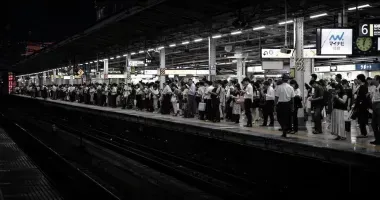
Golden Week Travel Advice
Japan will celebrate Golden Week from April 29 to May 6, 2024 , which comprises four national holidays: Showa Day on April 29, Constitutional Memorial Day on May 3
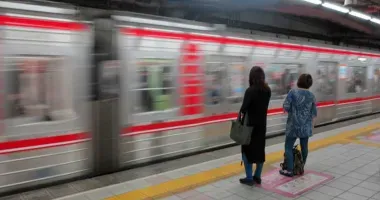
Midosuji Line Osaka: The key north-south subway route through central Osaka
The Midosuji Line is the oldest and one of the most important subway lines in Osaka, Japan.
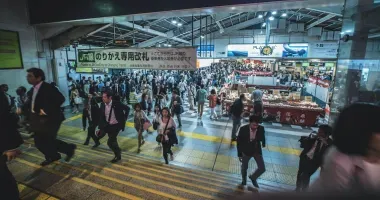
Train symbols in Japan: Understanding the complex naming and numbering schemes
Japan's extensive and efficient train network can be overwhelming for visitors at first glance.
All the themes of the city
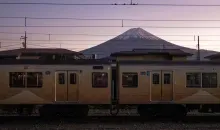
Unique Trains in Japan
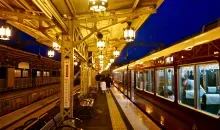
Japanese Stations

Getting Around Tokyo
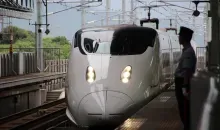
Shinkansen Travel Tips

Itineraries for Japan
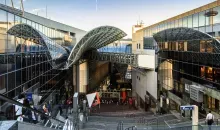
Getting Around Kyoto
Please select your country on the list below:
- Switzerland
- United Kingdom
- Other countries

Au Japon, ces lieux cachés aux touristes leur sont désormais ouverts
- Lire dans l’app
- Copier le lien Lien copié
Pourtant partie intégrante de la vie nocturne japonaise, les «snack-bars» peuvent intimider les touristes par leur caractère caché et discret. À Tokyo, une agence leur fait découvrir ces lieux rétro et conviviaux.
Dans une rue de Tokyo bordée d'enseignes lumineuses, en haut d'un étroit escalier, une porte peu engageante s'ouvre sur un «snack-bar», lieu apprécié des habitués, mais quasiment invisible pour les touristes... du moins jusqu'à présent. Ces bars confortables et rétro, souvent nichés dans les étages des immeubles, sont généralement tenus par une femme surnommée «mama», qui discute avec les clients tout en leur servant boissons, cacahuètes, calamars séchés et autres petits plats à grignoter.
Bien que les «snacks» fassent partie intégrante de la vie nocturne japonaise, leur caractère discret et caché peut intimider, en particulier ceux qui ne parlent pas la langue du pays. C'est pour eux qu'une agence a décidé de proposer des visites guidées de snack-bars tels que «Kuriyakko», dans le quartier tokyoïte de Shimbashi.
À l’intérieur, de faibles lumières se reflètent chaleureusement sur les carreaux de faïence rouges, illuminant un poster Art déco tandis qu'une famille américaine chante les tubes «Hey Jude» et «Take Me Home, Country Roads». Nora, qui vivait auparavant au Japon , explique à l'AFP avoir réservé la visite pour ses parents, sa sœur, sa tante et son oncle après en avoir appris l'existence sur Instagram.
100.000 snack-bars dans tout le Japon
« J'ai toujours vu les enseignes des snacks, mais je ne savais pas trop comment y entrer ou ce qu'il fallait y faire », explique cette trentenaire, désormais installée à San Francisco et qui n'a souhaité donner que son prénom. « Ma famille ne va pas souvent au Japon, c'était donc une bonne occasion d'avoir une véritable expérience de la culture des bars » de manière « joviale » et « intime ».
La guide de l'agence Snack Yokocho explique au groupe comment commander en japonais du whisky et du vin de prune «umeshu», et à dire «santé» («kanpai !»). Vêtue d'un élégant kimono rose pâle et coiffée d'un chignon traditionnel, la «mama» Kuri Awaji, qui œuvre depuis 25 ans derrière le bar de Kuriyakko, accompagne les clients qui poussent la chansonnette sur un karaoké.
Selon Snack Yokocho, le Japon compte environ 100.000 snack-bars. Si des femmes y officient la plupart du temps, certains sont tenus par des hommes. Bien que l'atmosphère y soit moins à la recherche d'une rencontre que dans les bars à hôtes et hôtesses modernes, l'accent étant mis sur la conversation conviviale, les snack-bars sont historiquement liés tout de même aux «quartiers chauds» du Japon.
De plus en plus de femmes clientes
Après la Seconde Guerre mondiale, certaines femmes se sont tournées vers le travail du sexe pour survivre, mais des lois anti-prostitution ont été introduites au moment des Jeux olympiques de 1964, explique Mayuko Igarashi, représentante de Snack Yokocho. Pour gagner de l'argent, elles ont donc « posé une simple caisse en bois dans la rue et ont commencé à y servir des boissons et des snacks », d'où le nom de ces établissements.
Nombre d'entre elles étaient divorcées et élevaient seules leurs enfants, d'où le surnom de «mama», selon Mme Igarashi: « Il était difficile pour elles de travailler en journée, alors une fois les enfants couchés, elles tenaient le comptoir », explique-t-elle. Selon Mme Igarashi, il y aurait eu 200.000 snack-bars au Japon dans les années 1950-60, mais leur nombre a diminué à mesure que les «mama» prenaient leur retraite ou vendaient leur affaire.
«Les gens apprennent à se connaître très rapidement»
Aujourd'hui, avec le nombre record de touristes qui visitent le Japon, Snack Yokocho affirme que l'intérêt pour ses circuits est croissant. Outre les snacks «classiques» comme Kuriyakko, l'entreprise se rend dans des snack-bars à thème, dont l'un est spécialisé dans le golf. Elle organise aussi parfois des visites guidées pour les Japonaises qui souhaitent découvrir la culture des snacks, mais qui hésitent à pousser seules leurs portes.
Pendant des années, la clientèle de ces bars était presque exclusivement masculine, selon M. Igarashi. Mais avec la présence accrue des femmes sur le marché du travail, les snacks sont devenus un « endroit où elles peuvent se détendre ou parler de leurs problèmes à la mama ». Les gens ont tendance à parler sur les réseaux sociaux, mais après une mauvaise journée, rien ne vaut la communication face à face, selon elle. « Dans un snack-bar, les gens peuvent se regarder dans les yeux et apprendre à se connaître très rapidement, même des inconnus. »
EN VIDÉO - Chute du yen: le pouvoir d'achat des touristes étrangers s'envole au Japon
- «J’ai acheté trois paires de chaussures» : avec la chute du yen, le pouvoir d’achat des touristes étrangers s’envole au Japon
- Tout savoir sur le JR pass, ou comment bien voyager en train au Japon
- Immersion au Japon, dans le Tokyo des légendes
Partager via :
Plus d'options
Il n'y a actuellement aucun commentaire concernant cet article. Soyez le premier à donner votre avis !
En Thaïlande, un événement heureux pour la population d’éléphants
Une rare naissance de jumeaux a eu lieu près de Bangkok.
Ce nouveau service d’Air France va soulager les passagers, mais il faudra payer pour y accéder
En vue des Jeux Olympiques de Paris, la compagnie aérienne élève son niveau de service dans l’aéroport parisien de Roissy-Charles-de-Gaulle. Une nouvelle offre de conciergerie pour tous ses clients est disponible depuis ce 11 juin, pour toutes les réservations de vols opérés par Air France ou assurés en partage de codes par un partenaire.
Vacances d’été : oubliez la Méditerranée, on a trouvé l'alternative parfaite... en Pologne
Au nord du pays, au bord de la Baltique, se trouvent des kilomètres de plages de sable fin et des cités balnéaires de standing, où les températures sont supportables, offrant une bonne alternative aux stations méditerranéennes.
- Résultats des élections
- Guerre en Ukraine
- Tension Iran-Etats Unis
- Corée-Du-Nord
- Actualité politique en temps réel
- Analyses, débats politiques et sociétaux
- Actualité et réseaux sociaux
- Programme TV en ce moment
- Programme TV TNT
- Séries Netflix, HBO, OCS et TV
- Election et photos Miss France 2024
- Programme TV Canalsat
- Programme TV Free
- Programme TV SFR
- Actu people
- Calendriers et résultats des matchs en direct
- Jeux olympiques
- Actualité cyclisme
- Résultats, classement général Tour de France
- Classement Ligue 1
- Classement Top 14
- Transferts football
- Coupe du monde de football
- Ballon d'Or France Football
- Horoscope du jour
- Guide du mariage
- Recettes de cuisine
- Brigitte Macron
- Apéritif dînatoire
- Recette pâte à crêpe
- Tendance bijoux
- Meghan Markle
- Gainer son corps
- Fiches et guides des médicaments
- Astuces et conseils bien-être
- Santé et sexualité
- Index des maladies
- Conseils alimentation, nutrition et santé
- L'encyclopédie des organes
- Conseils en psychologie
- La pollution va t-elle nous tuer ?
- Apnée du sommeil : Comment mieux dormir ?
- 15 mythes sur les vertus des aliments
- Guide d'achat maison et jardin
- Guide d'achat santé et beauté
- Guide d’achat high-tech
- Guide d'achat smartphones et tablettes
- Comment choisir le meilleur extracteur de jus ?
- Quelle est la meilleure montre connectée ?
- Quel est le meilleur home cinéma sans fil ?
- Comparatif semelle gel
- Quel épilateur électrique choisir ?
- Meilleurs VPN de 2023
- Résultats Bac
- Révisions du Bac
- Annuaire des écoles de commerce
- Les entreprises qui recrutent
- Trouver un stage
- Résultats Brevet des collèges
- Classement des écoles de commerce
- Trouver une alternance
- Agenda étudiant : JPO, salons…
- Succession de Johnny Hallyday
- Sorties cinéma
- Guide arts et expositions
- Actualité musicale
- Actualité jeux-vidéo
- Citations et proverbes
- Réservation de spectacles et théâtre
- Sortir à Paris
- Histoire de France
- Langue française
- Code promo Wish
- Code promo Cdiscount
- Code promo SheIn
- Code promo eBay
- Code promo AliExpess
- Code promo Deliveroo
- Code promo Nike
- Code promo Sephora
- Code promo Showroomprive
- Code promo Asos
- Toutes les offres d'emploi
- Emploi à Paris
- Emploi à Lyon
- Emploi à Toulouse
- Emploi à Nantes
- Emploi à Bordeaux
- Emploi commercial
- Emploi contrôleur de gestion
- Emploi logistique
- Emploi communication
- Nos fiches métiers
- Annonces immobilières
- Achat appartement Paris
- Achat appartement Nice
- Achat appartement Cannes
- Achat appartement Bordeaux
- Achat appartement Lyon
- Achat appartement Aix-en-provence
- Achat maison Bordeaux
- Achat maison Marseille
- Achat maison Montpellier
- Simulateur de seuil de richesse
- Actualité économique et analyses
- Impôts sur le revenu : simulateur
- Palmarès des villes où investir dans l'immobilier
- Studios et 2-pièces : les loyers ville par ville
- Calculer l'impôt à payer
- Barême des droits de succession et donation
- Indice de référence des loyers (IRL)
- En France, les hauts revenus sont-ils tous des «riches»?
- Carte familles nombreuses : jusqu’à 75 % de réduction sur les billets de train
- Guide des croisières
- Guide voyage Jordanie
- Guide voyage Namibie
- Guide voyage Maroc
- Guide voyage New York
- Guide voyage Birmanie
- Guide voyage Lille
- Guide voyage Antilles
- Guide voyage Japon
- Guide voyage Amsterdam
- Le Figaro Magazine
- Madame Figaro
- Le Figaro Hors-Série
- Le Figaro Histoire
- TV Magazine
- F, l'art de vivre
- TV, home cinéma et vidéo
- Sport et mobilité
- Santé et beauté
- Maison, jardin et bricolage
- High tech et informatique
- Jeux vidéo et consoles
- Smartphones et tablettes
- Casques, enceintes et platines
- A savoir en France
- Annonces légales
- Tous les vins
- Comprendre le vin
- Tops et sélections
- Domaines et vignerons
- Economie du vin
- Foire aux vins
- Magazine du vin
- Terroir et viticulture
- Résultats des élections Hauts-de-Seine
- Résultats des élections Seine-Saint-Denis
- Résultats des élections Val-de-Marne
- Résultats des élections Val-d'Oise
- Résultats des élections Yvelines
- Résultats des élections Var
- Résultats des élections Alpes-Maritimes
- Résultats des élections Essonne
- Résultats des élections Nord
- Résultats des élections Auvergne-Rhône-Alpes
- Résultats des élections Bourgogne-Franche-Comté
- Résultats des élections Bretagne
- Résultats des élections Centre-Val de Loire
- Résultats des élections Corse
- Résultats des élections Grand Est
- Résultats des élections Hauts-de-France
- Résultats des élections Ile-de-France
- Résultats des élections Normandie
- Résultats des élections Nouvelle-Aquitaine
- Résultats des élections Occitanie
- Résultats des élections Pays de la Loire
- Résultats des élections Provence-Alpes-Côte d'Azur
- Résultats des élections Paris
- Résultats des élections Marseille
- Résultats des élections Lyon
- Résultats des élections Toulouse
- Résultats des élections Nice
- Résultats des élections Nantes
- Résultats des élections Montpellier
- Résultats des élections Strasbourg
- Résultats des élections Bordeaux
- Résultats des élections Lille
- Résultats des élections Rennes
- Résultats des élections Reims
- Résultats des élections Saint-Étienne
- Le Figaro Bordeaux
- Le Figaro Lyon
- Le Figaro Nantes
- Le Figaro Nice
À tout moment, vous pouvez modifier vos choix via le bouton “paramétrer les cookies” en bas de page.
Japan Experience, far more than a trip

The Leading Japan Travel Specialist
Trusted by more than 300,000 travelers each year
Direct Assistance and Support
Our team of passionate individuals works with you directly, no intermediary needed
A trip made just for you
All of your Japan travel essentials in one place
Japan Experience, travel specialist to Japan since 1981
- JAPAN RAIL PASS
- TRAIN TICKETS
- REGIONAL PASSES
Travel specialist to Japan since 1981
Japan Experience offers you travel packages that adapt to your desires while offering an immersion in the Japanese culture and daily life.
Our unique and diverse catalog adapts to your desires: Japan Rail Pass, tours, accommodation, activities, car rentals, and various travel products. Japan Experience accompanies you on every aspect of your stay anchored by 40 years of experience and our knowledgeable passionate travel advisers.
Japan Rail Pass National & Regional
Train Tickets
- House rentals
Internet access
Tailor your train travel
Making train travel even easier
Through an official partnership with the National Japan Railways Group (JR) , Japan Experience becomes the first and only authorized seller of train tickets outside Japan.
It allows travelers to customize their train itineraries, preferences, and timing without committing to a multi-use pass that may not fully align with their journey 🚅.
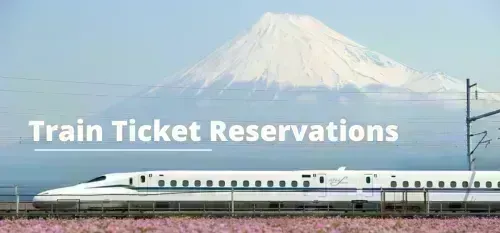
Our tours in Japan
It is time to explore Japan!
Japan Experience offers unlimited vacation possibilities to explore Japan . Our tours are the best way to ensure that you do not miss seeing any of the highlights of Japan .
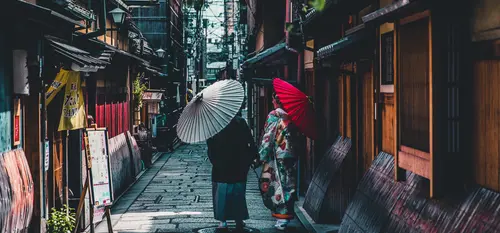
© Andre Benz, Unsplash
Our top recommendations
- Rail Passes & Tickets
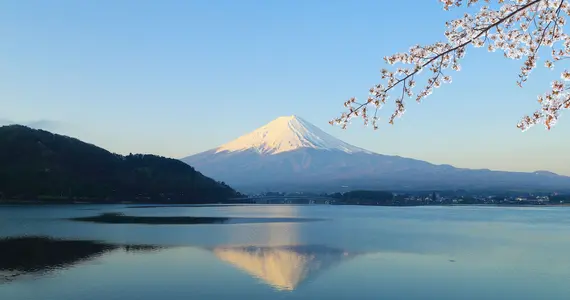
Tokyo, Mount Fuji & Kyoto Self-Guided Tours in Japan
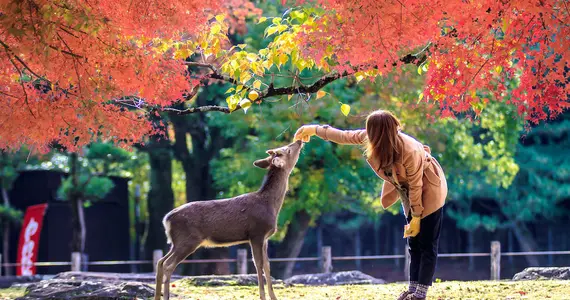
Japan Family Tour Self-Guided Tours in Japan

KOYASAN 2-day pass Regional Japan Rail Passes
- Included : Economic and simple, Unlimited travel
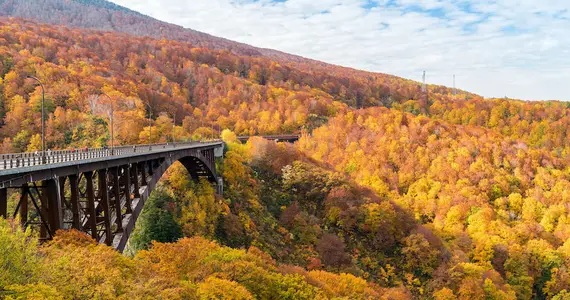
Northern trains: from the Sea of Japan to the Pacific Our excursions in Japan
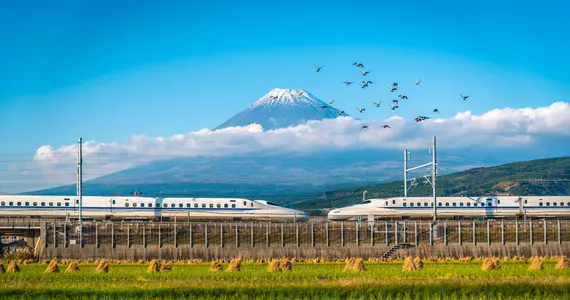
Japan Rail Pass National Discover all Rail Passes in Japan
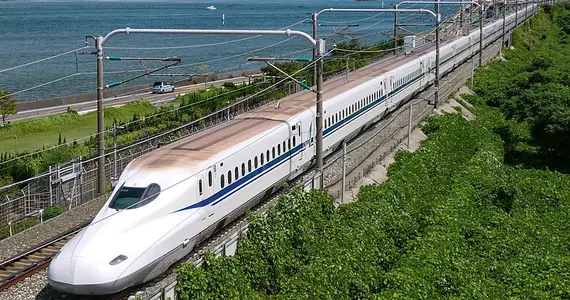
KANSAI HIROSHIMA JR Pass Regional Japan Rail Passes

Train Tickets from Tokyo to Kyoto Train Tickets in Japan
Tokyo › Kyoto
- 06:00 / 21:24
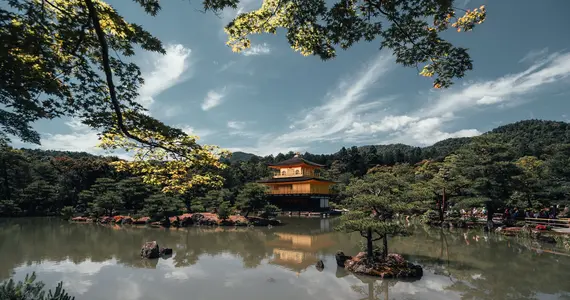
OSAKA-TOKYO HOKURIKU Arch Pass Regional Japan Rail Passes
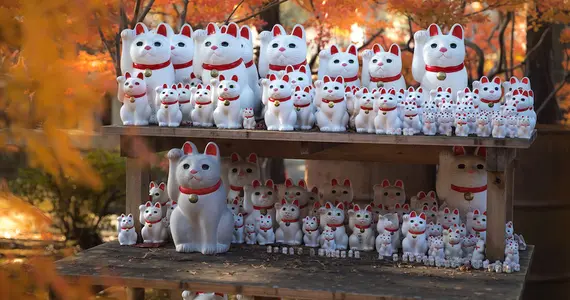
Between Manga and Tradition Self-Guided Tours in Japan

Honeymoon in Japan Self-Guided Tours in Japan

Highlights of Japan Self-Guided Tours in Japan
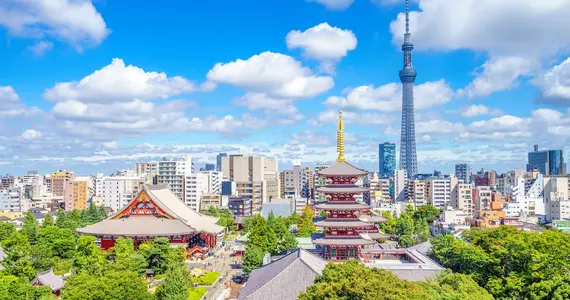
Tokyo & Kyoto Self-Guided Tours in Japan
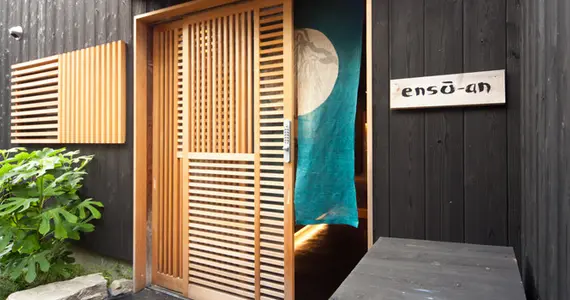
Enso-an Rent a house in Kyoto
Kiyomizu, Kyoto
- 8 travelers
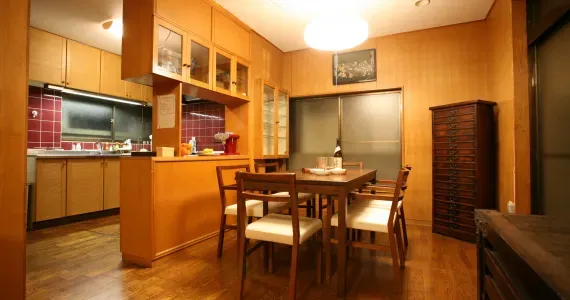
Ikebukuro Rent a house in Tokyo
Kami-Ikebukuro, Tokyo
- 7 travelers
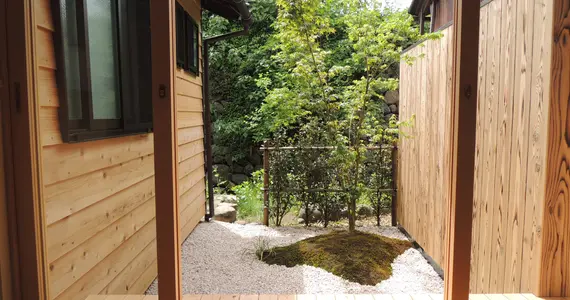
Kenroku Rent a house in Kanazawa
Higashiyama, Kanazawa
- 5 travelers

DELTA STAY Rent a house in Kyoto
Demachiyanagi, Kyoto
- 2 travelers
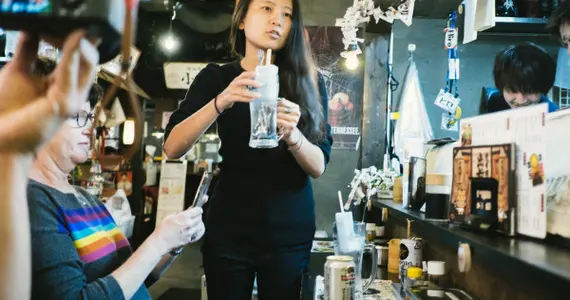
Gastronomic stroll through Osaka Activities in Osaka
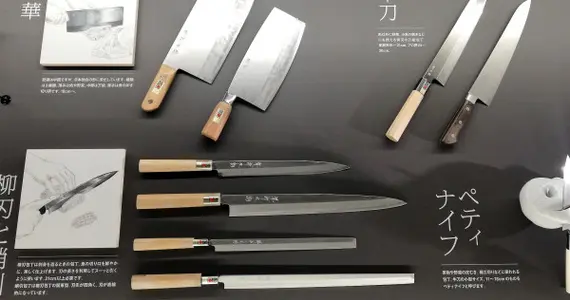
Découvrez la coutellerie japonaise à Sakaï Activities in Osaka

The art of Bonsai Activities in Tokyo
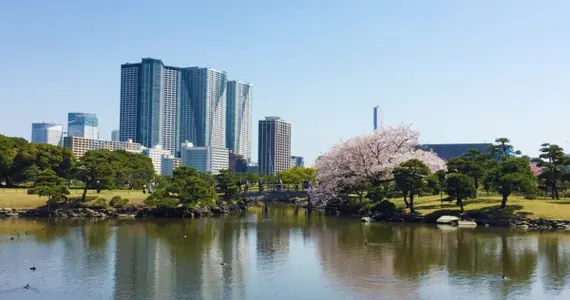
Edo Gardens - private tour Activities in Tokyo
Our latest articles
Discover our latest articles and news to know everything about Japan

Travelling in Japan: Etiquette Tips and Customs for a Successful Stay
Visiting Japan means immersing yourself in a rich new culture. For a complete and respectful immersion, and to ensure quality interactions with the local
See the article

Japan Rail Pass or Train Tickets: what to choose when traveling in Japan?
When traveling in Japan, if your itinerary takes you beyond Tokyo, for example into the Kansai (Kyoto & Osaka) region, a primordial question awaits: how to get around Japan and naviga

What to do during the rainy season?
Japan, with its well-defined seasons, has a special period called tsuyu or rainy season , which generally runs from early June to mid-July

The Best Amusement Parks to visit in Japan
Japan's impressive roster of world-beloved amusement parks are just another way of having fun when visiting the island nation!
Explore Japan your way
Discover Japan through our different travel themes
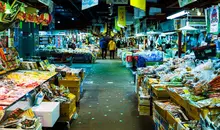
Markets in Japan

Onsen, Hot Springs and Public Baths
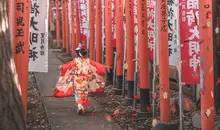
Family Travel
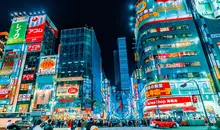
Nightlife in Japan: Going out, exploring and drinking

Temples and Shrines

Parks and Gardens

Outdoor Activities

Museums and Galleries

Restaurants and Cafes
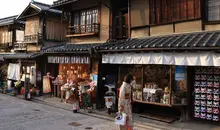
Shopping and souvenirs
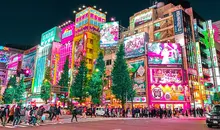
Japanese Pop Culture
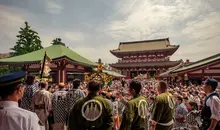
Events and Festivals
Find your ideal destination
The best cities to explore for your next trip to Japan
Popular cities Choose a city
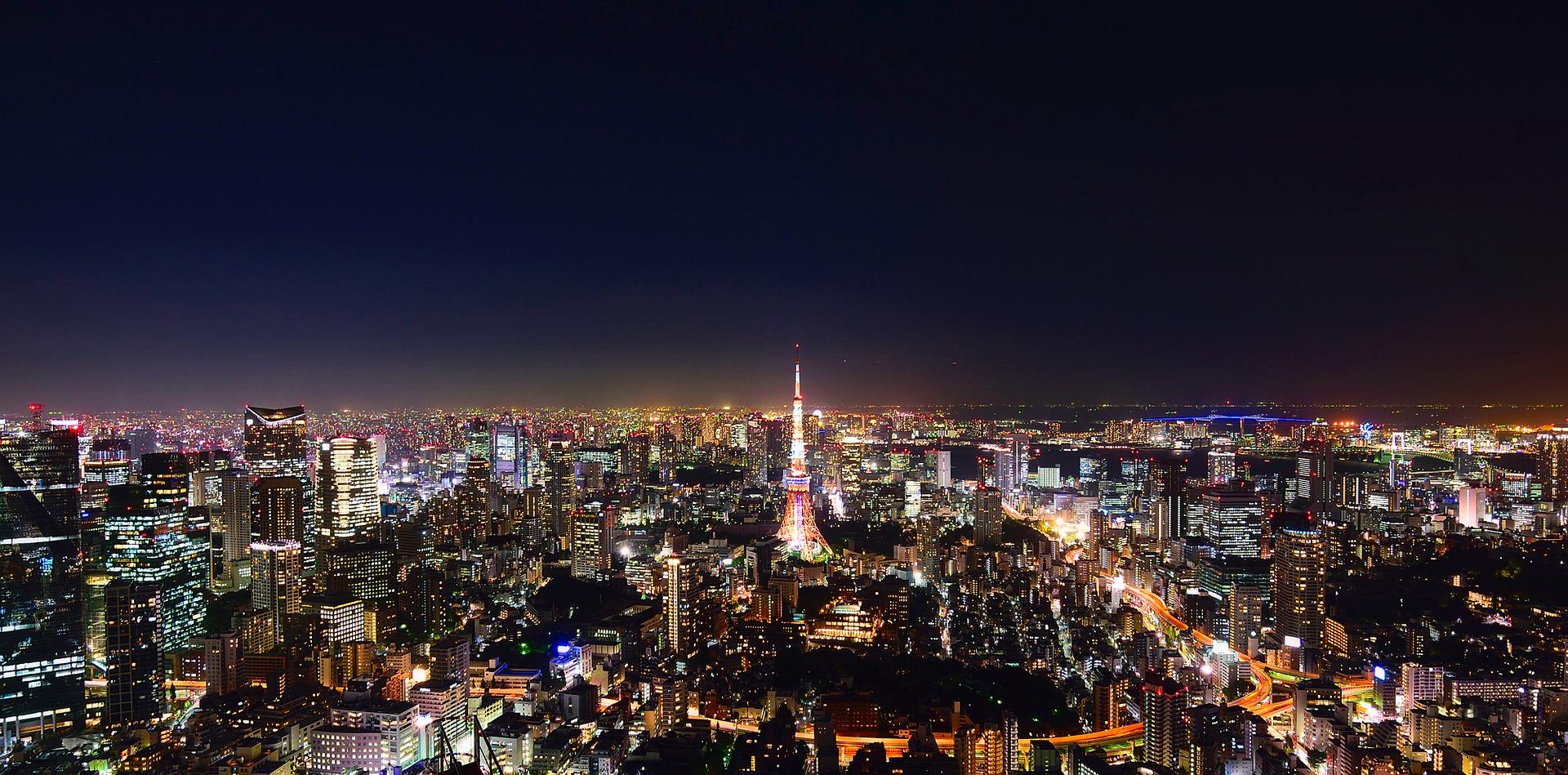
Find all you need to know about Tokyo, Japan's bustling capital: Tokyo area guides, Tokyo parks, Tokyo museums and the city's restaurants and bars.
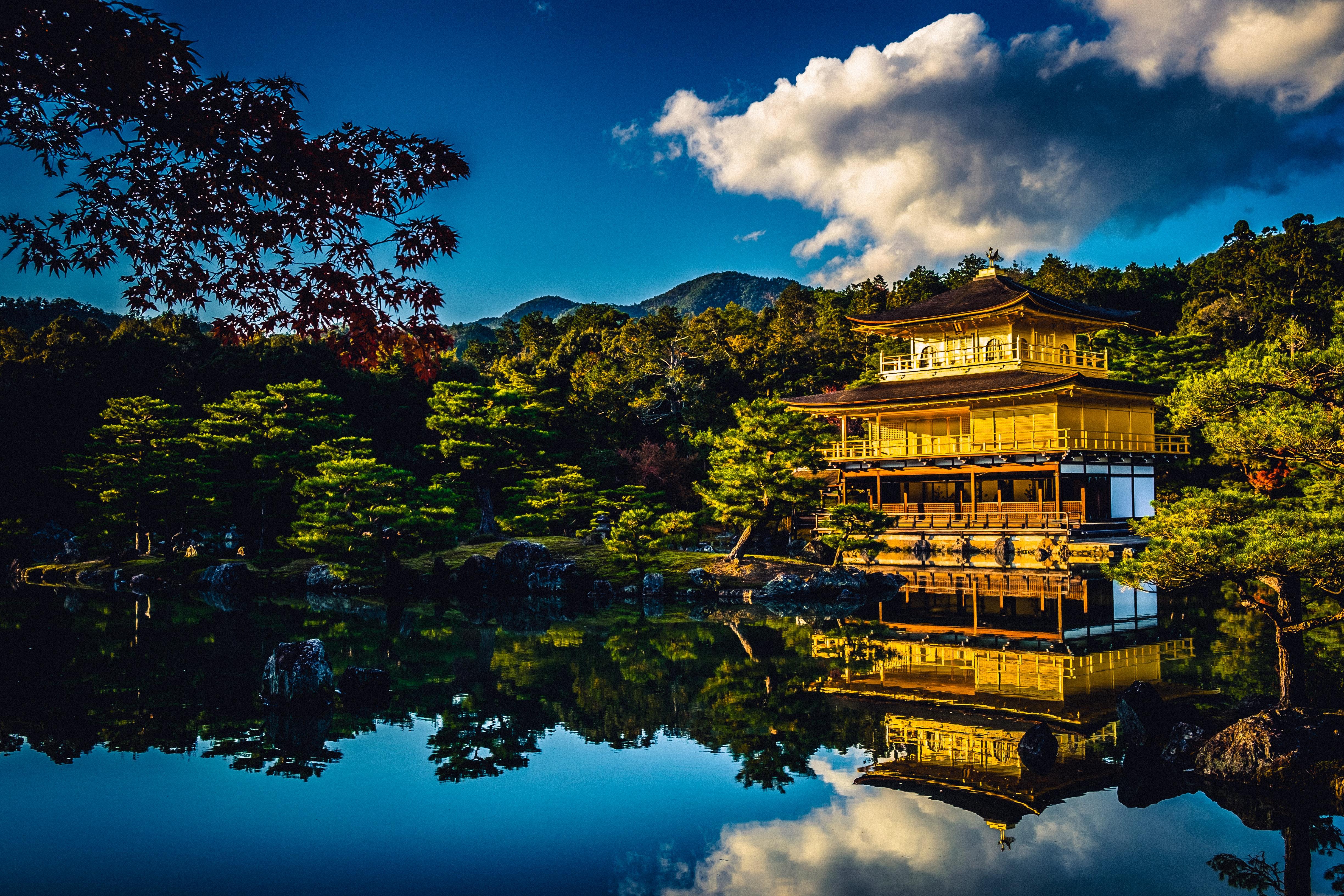
Kyoto, the former imperial capital, is the most visited city in japan after Tokyo. It is traditional, spiritual, gastronomic and modern all at once, the city is an infinite source of fascination for those who explore it. Visiting Kyoto is an opportunity t...
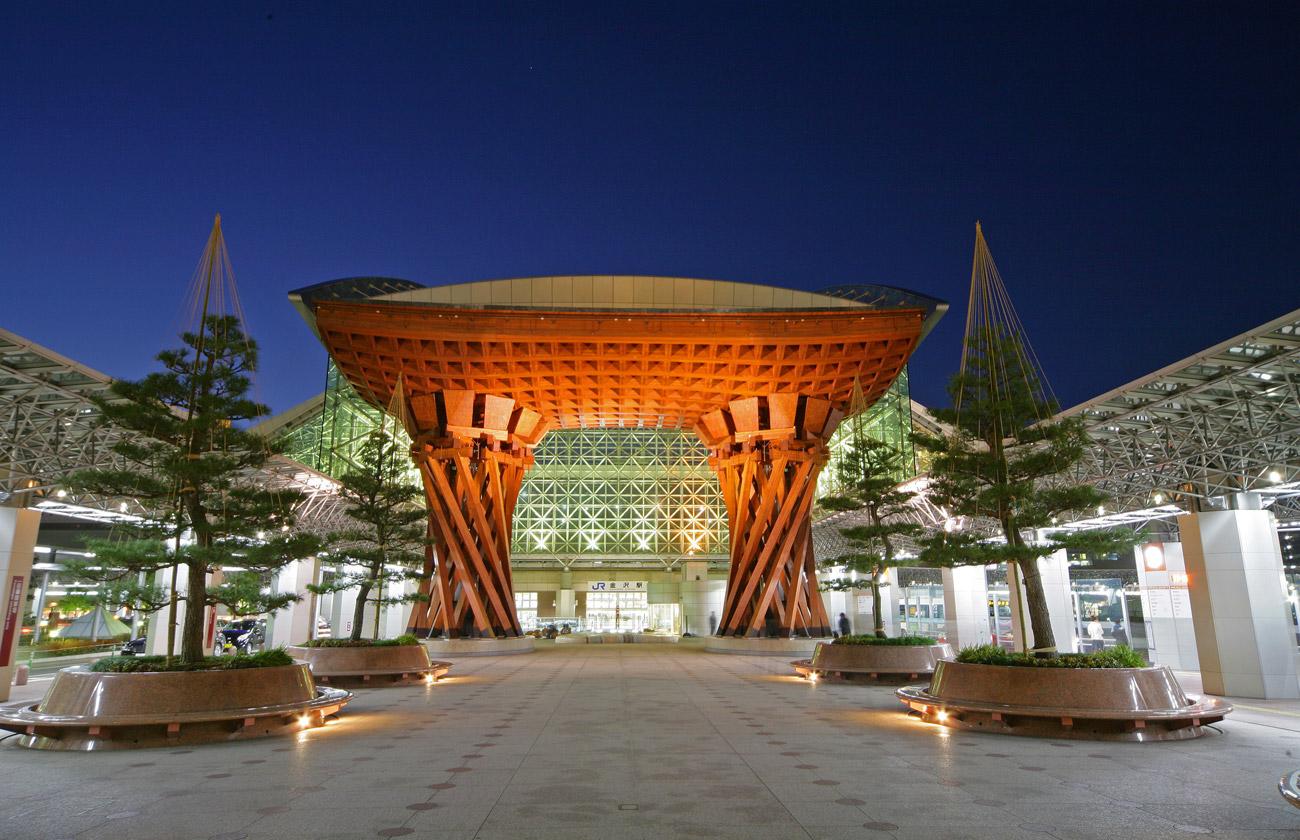
This medium-sized city, nestled between the Sea of Japan and the Japanese Alps, has plenty to offer travelers: exceptional historical sites, renowned art museums, traditional cuisine and refined craftwork. Kanazawa is a must-see destination.
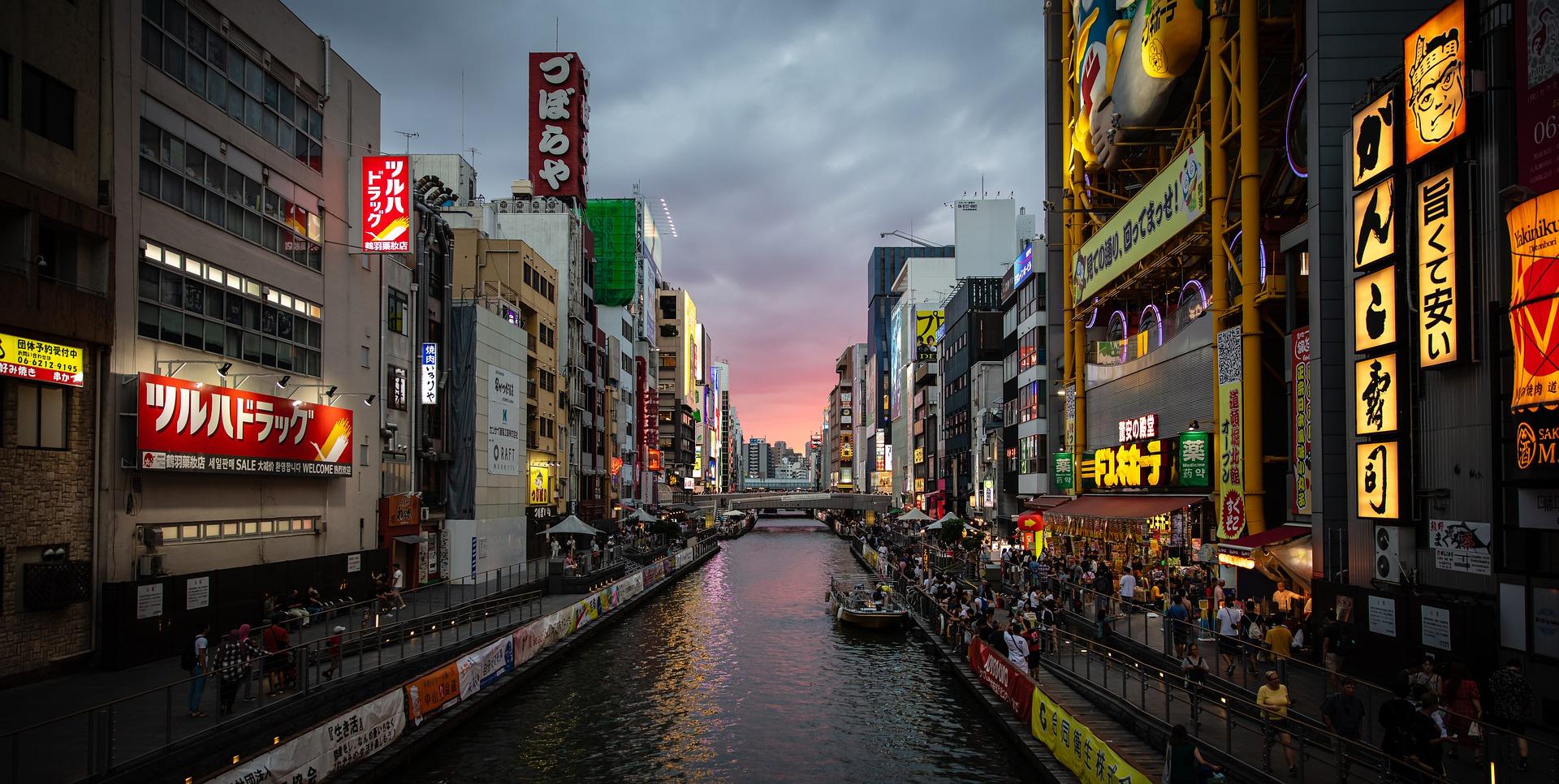
Some impressions endure time and appeal to generations to come. In Japan, Osaka is always looking to the future. A major hub of innovations, the economic capital of Kansai has a taste for commerce, audacity, and hospitality. Today, Osaka is the third...
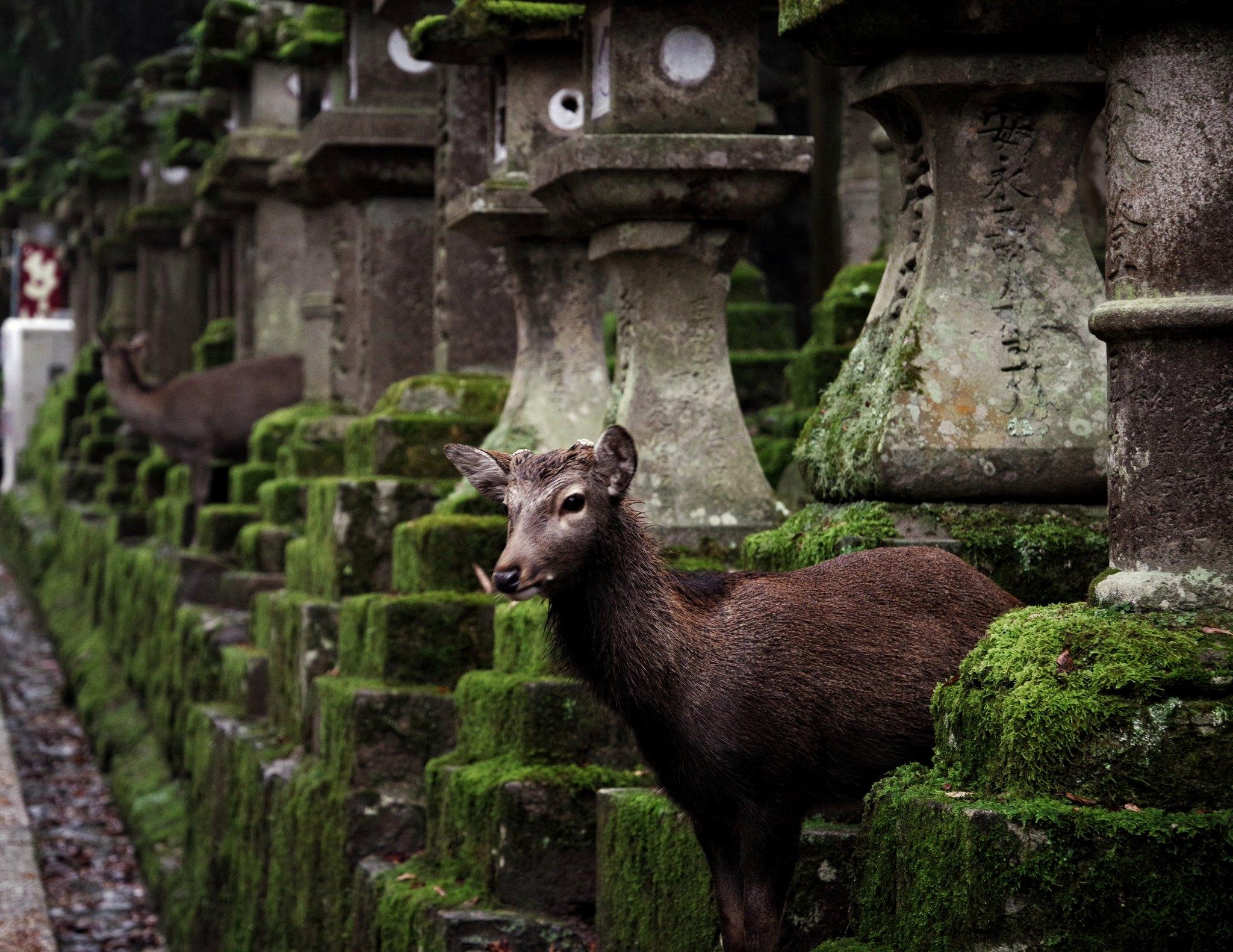
Nara is located in the Kansai region and was Japan's first imperial capital. Nara has a wealth of historical and cultural heritage and of course deer. Home to many treasures that would be a shame to miss on your visit to Japan.
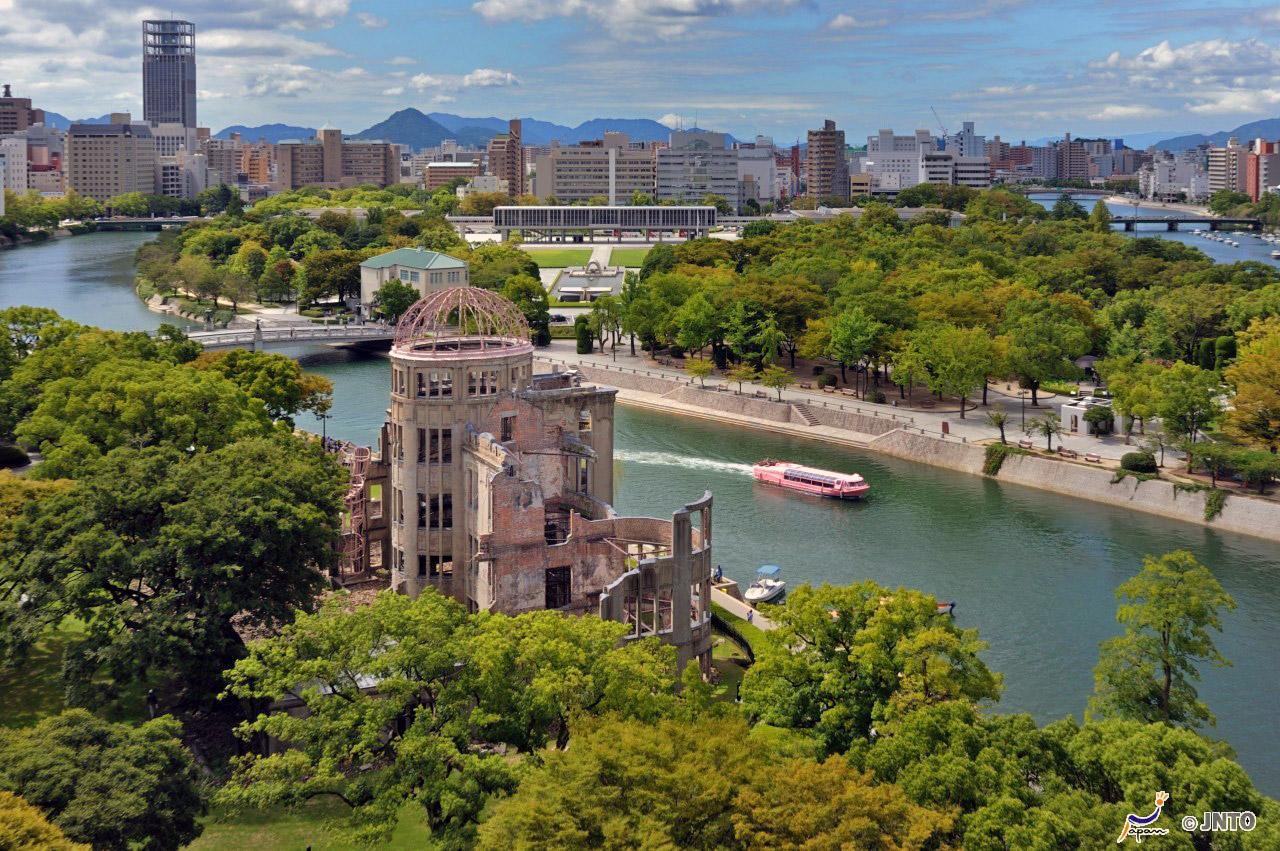
What is Hiroshima about? Of a trauma, that of the first atomic bombing, the atrocity of nuclear fire revealed to humanity. Of an ideal, that of a radical and unapologetic pacifism that constantly reminds the world of the true face of war. A city, last but...
Discover all of our products to travel in peace
How to access internet in japan .

Access the internet from anywhere in Japan with our connection solutions. Rent a Pocket Wifi, buy a Data Sim Card or an eSIM for your trip and stay connected while enjoying Japan to its fullest!
A0909C1A-93FB-4548-8F2A-CE5CA53C0BF6 Created with sketchtool. Prepaid Cards
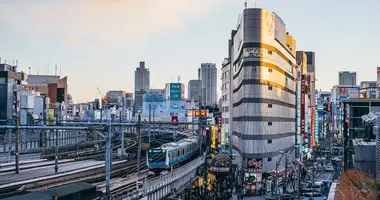
The Suica Card and Pasmo Card are a pre-paid top up card that allows you to use most public transport (metro, trains and buses) in Japan.
Discover all Rail Passes in Japan
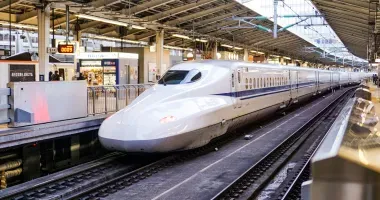
Best quality/price ratio for unlimited travel and, the Japan Rail Pass is the ideal travel solution, and the best way to discover Japan by train!
What our customers say about us
Your opinion is important
Contact our experts for tailor-made advice
Our travel advisors are standing by to organize your trip to Japan!
- Los Angeles
30 rue Sainte Anne
Open Monday to Saturday from 10am to 7pm Closed: Sundays and public holidays
Phone|t +33 (0) 1 42 61 60 83
Contact us Contact us
Suite 8 137-139 High Street Beckenham
- United Kingdom
Open Monday to Friday from 10am to 6pm Closed: weekends and public holidays
Phone|t + 44 (0)20 3514 6932
Calle San Bernardo 17 – 7º
Phone|t +34 91 198 31 75
Wallstraße 9-13
Phone|t +49 (0) 30 31199701
100 W Broadway Long Beach
United States
By phone and email, Monday to Friday from 9am to 3pm, Pacific Time. Closed: weekends and public holidays
Phone|t +1 800 835 6135
Apt. 701, Sepia Ikebukuro II, 2-55-12 Ikebukuro
Phone|t +81 (0) 3 4520 7099
Please select your country on the list below:
- Switzerland
- Other countries

IMAGES
VIDEO
COMMENTS
Si vous prévoyez un voyage avec le Japan Rail Pass, mieux vaut vous préparer ! Vous vous retrouverez souvent dans les trains japonais. Le train est le moyen de transport principal au Japon depuis l'apparition des premières locomotives à vapeur en 1872.. Un total de 30 625 km de voies ferrées parcourent le pays et transportent plus de 9 millions de passagers chaque année.
Guide pour voyager en train au Japon. Les voies ferrées japonaises et le Shinkansen (train à grande vitesse), célèbre dans le monde entier, relient presque toutes les villes et tous les recoins du pays à la vitesse de l'éclair, en toute commodité et en toute sécurité.
Bureaux d'échange du Japan Rail Pass : au Japon, ce sont les principaux lieux où un ordre d'échange peut être échangé contre un Japan Rail Pass. Si vous souhaitez optimiser votre temps lorsque vous prenez le train au Japon, vous pouvez planifier vos itinéraires bien à l'avance (et vous assurer de commander votre Japan Rail Pass avant.
Trains. See how long it takes to travel between Japanese cities by rail. Share. Share your plan to visit Japan with the world. Passes. Track how many days your Japan Rail Pass would need to cover. Costs. Estimate how much your trip will cost as you edit your plan. Notes.
To break it down, there are three main types of railway systems in Japan, with differing advantages and options. Japan's leading railway company, Japan Railways (JR), has a well-organized and well-established railway network throughout the country. Among its comprehensive network, the JR-operated Shinkansen, also known as the Bullet Train ...
Plan your travel journey with Jorudan online timetable . Japan Rail has a network of more than 20,000km covering the main islands of Honshu, Shikoku and Hokkaido, allowing for easy, efficient, eco-friendly travel across the country via the Shinkansen bullet train.It makes traveling by train in Japan very convenient and cost-efficient as most of Japan's main attractions and hotels in cities ...
You will fall passionately in love with trains in Japan.. Japanese people didn't invent rail travel, but they arguably perfected it. Whether you're on the newest shinkansen (bullet train) zooming across the country at 320km/h (199mph) or an elderly regional railcar, you can count on your train being scrupulously clean, safely operated, highly reliable, famously punctual and generally a joy ...
Voyager au Japon en train Le guide pratique de Japan Experience. Le Japon possède 30 625 kilomètres de voies ferrées, un rêve pour se déplacer à travers le pays: encore faut-il savoir comment réserver un siège ou consulter les horaires de train, c'est pourquoi Japan Experience propose le guide pratique pour prendre le train au Japon.
Traveling in Japan by train The practical guide of Japan Experience. Japan has 23,670 kilometers of rail track across the country, making it easy to travel throughout the country.Whilst planning your trip, you will need to know how to reserve a seat, check train schedules and more, which is why Japan Experience offers a practical guide on Japan by train.
Au fil du Japon est une agence de voyage spécialisée dans les voyages sur-mesure au Japon. Notre équipe, francophone, est installée en plein coeur de Tokyo et sera vous faire bénéficier de son expertise pour construire avec vous un voyage à votre image. Au fil du Japon est membre du réseau d'agences locales Nomadays.
Horaire et coût des principaux trajets en train. Au Japon, le réseau ferroviaire est le meilleur moyen de voyager mais il peut parfois être difficile de trouver le bon chemin pour arriver à destination. Voici deux tableaux pour vous aider à planifier vos itinéraires au Japon rapidement et facilement : horaires et coûts des trains au Japon.
One major thing to note for trains in Japan is the size of train stations, especially in large cities like Tokyo and Osaka. Stations like Shibuya Station, Shinjuku Station, Tokyo Station, Umeda Station, and Shin-Osaka Station act as commercial centers as much as train stations, having restaurants, malls, and offices inside of them as well as servicing multiple train lines.
Aru Ressha: A Gastronomic Voyage on Japan's Luxury Train. The Aru Ressha is a luxury train in Japan that had its name revived back in 2015 after over one hundred in the shadows. This luxurious train operates between the port town of Hakata and Yufuin, offering travellers one round trip daily. Boasting two stunning rail cars that combine two ...
En train au Japon : Conseils pour un voyage en douceur . Le Japon est réputé pour son réseau ferroviaire, mais le train est bien plus qu'un simple moyen de transport. Au Japon, le train fait partie de la culture et occupe une place particulière dans la vie quotidienne. Il est utilisé aussi bien pour le transport local dans les villes ...
Notre équipe est là pour vous aider dans la commande de votre Japan Rail Pass et de vos billets de train. #1 Distributeur Officiel Mondial - Japan Experience est une agence de voyage spécialisée sur le Japon fondée il y a 40 ans. Implanté dans le monde entier, nous visons à être le premier spécialiste du voyage au Japon.
Read all of our tips to travel by train in Japan! Japan's railway system is widely considered to be one of the most efficient, reliable, and convenient in the world.With over 27,000 kilometers of train tracks spanning the length and breadth of the Japanese archipelago, train travel is not only a convenient mode of transportation but also an experience in and of itself.
Journey. On TRAIN SUITE SHIKI-SHIMA's exciting range of journeys, you can experience Japan's rich, beautiful nature and the unique culture that permeates Japan's local industries and daily life, with the leisurely pace and comfortable space that only a luxury train can provide. READ MORE. Trip Application.
Here are the prices in USD for the main routes (1 USD = 113 ¥ ) . The table above represents the train fares of "non-reserved seats". The train is not the cheapest means of transport of Japan (for example night buses are cheaper) but it is the most convenient and comfortable. You can find the train fares using Hyperdia, you can see the price ...
Au Japon, ces lieux cachés aux touristes leur sont désormais ouverts. Vêtue d'un élégant kimono rose pâle et coiffée d'un chignon traditionnel, la «mama» Kuri Awaji, qui œuvre depuis 25 ...
Unique Trains in Japan. The Twilight Express Mizukaze is a super luxury sleeper train in Japan. The Umisachi Yamasachi Limited Express sightseeing train runs along the scenic Nichinan Coast from Miyazaki Station to Nango. The Anpanman Train is a special train running in Shikoku with liveries and interior decorations on the theme of the popular ...
Japan Experience offers you travel packages that adapt to your desires while offering an immersion in the Japanese culture and daily life.. Our unique and diverse catalog adapts to your desires: Japan Rail Pass, tours, accommodation, activities, car rentals, and various travel products.Japan Experience accompanies you on every aspect of your stay anchored by 40 years of experience and our ...